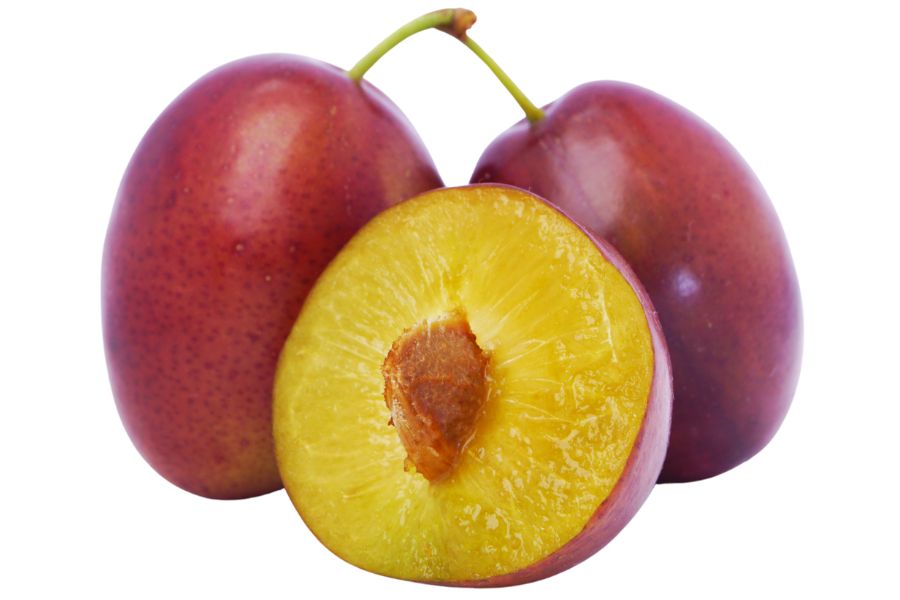Montana’s wild plants have fed people for generations, offering everything from greens and berries to edible roots.
American plum and buffaloberry both produce fruit that can be gathered and preserved, though their growing conditions are quite different. Dandelions, one of the most familiar wild edibles, are worth more than a passing glance when foraging.
Watercress thrives in cold, clean streams and adds a sharp bite to meals when used raw. Nodding onion, with its delicate bulbs and edible leaves, has long been appreciated for both culinary and medicinal use.
And even common mallow, a weedy presence in disturbed soils, can be harvested for its soft, mild leaves.
Some of Montana’s best edible plants don’t stand out at all unless you know what you’re looking at. Once you start paying closer attention, you’ll notice how much food is actually growing right under your feet.
What We Cover In This Article:
- The Edible Plants Found in the State
- Toxic Plants That Look Like Edible Plants
- How to Get the Best Results Foraging
- Where to Find Forageables in the State
- Peak Foraging Seasons
- The extensive local experience and understanding of our team
- Input from multiple local foragers and foraging groups
- The accessibility of the various locations
- Safety and potential hazards when collecting
- Private and public locations
- A desire to include locations for both experienced foragers and those who are just starting out
Using these weights we think we’ve put together the best list out there for just about any forager to be successful!
A Quick Reminder
Before we get into the specifics about where and how to find these plants and mushrooms, we want to be clear that before ingesting any wild plant or mushroom, it should be identified with 100% certainty as edible by someone qualified and experienced in mushroom and plant identification, such as a professional mycologist or an expert forager. Misidentification can lead to serious illness or death.
All plants and mushrooms have the potential to cause severe adverse reactions in certain individuals, even death. If you are consuming wild foragables, it is crucial to cook them thoroughly and properly and only eat a small portion to test for personal tolerance. Some people may have allergies or sensitivities to specific mushrooms and plants, even if they are considered safe for others.
The information provided in this article is for general informational and educational purposes only. Foraging involves inherent risks.
The Edible Plants Found in the State
Wild plants found across the state can add fresh, seasonal ingredients to your meals:
Elderberry (Sambucus nigra subsp. cerulea)
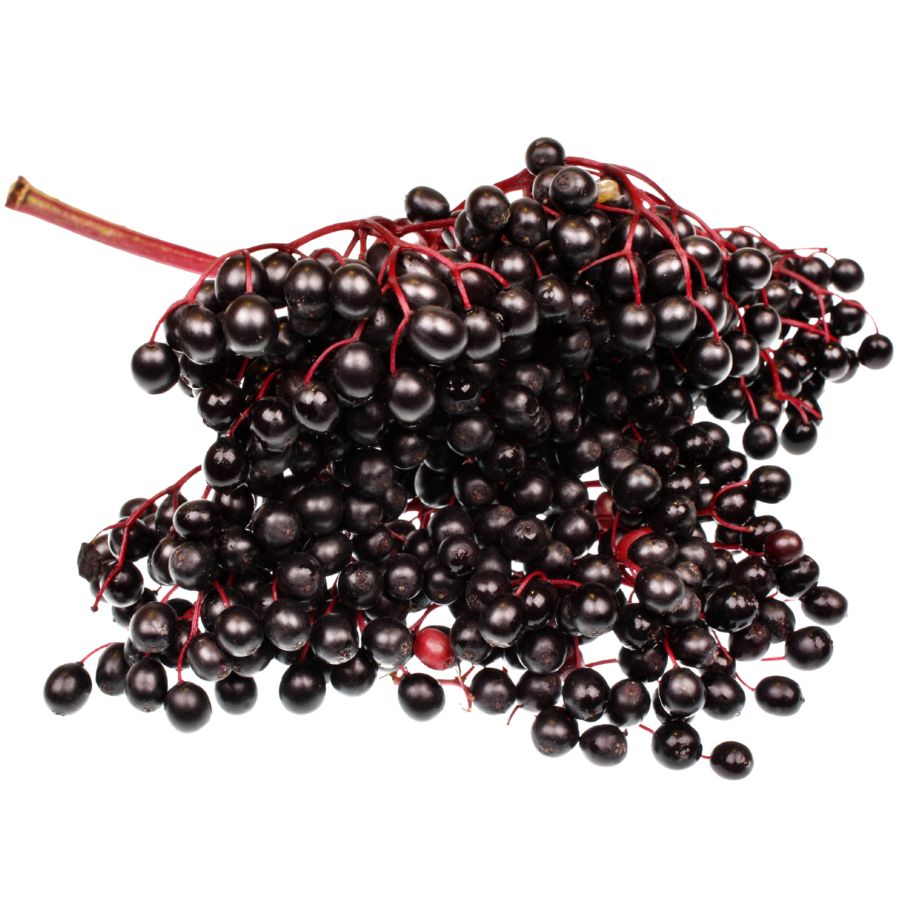
Elderberry is often called American elder, common elder, or sweet elder. It grows as a large, shrubby plant with clusters of tiny white flowers that eventually turn into deep purple to black berries.
You can recognize elderberry by its compound leaves with five to eleven serrated leaflets and its flat-topped flower clusters. One important thing to watch out for is its toxic lookalikes, like pokeweed, which has very different smooth-edged leaves and reddish stems.
The ripe berries have a tart, almost earthy flavor and a soft texture when cooked. People usually cook elderberries into syrups, jams, pies, or wine because eating raw berries can cause nausea.
Only the ripe, cooked berries and flowers are edible, while the leaves, stems, and unripe berries are toxic. Always take care to strip the berries cleanly from their stems before using them, as even small bits of stem can cause problems.
Buffaloberry (Shepherdia argentea)
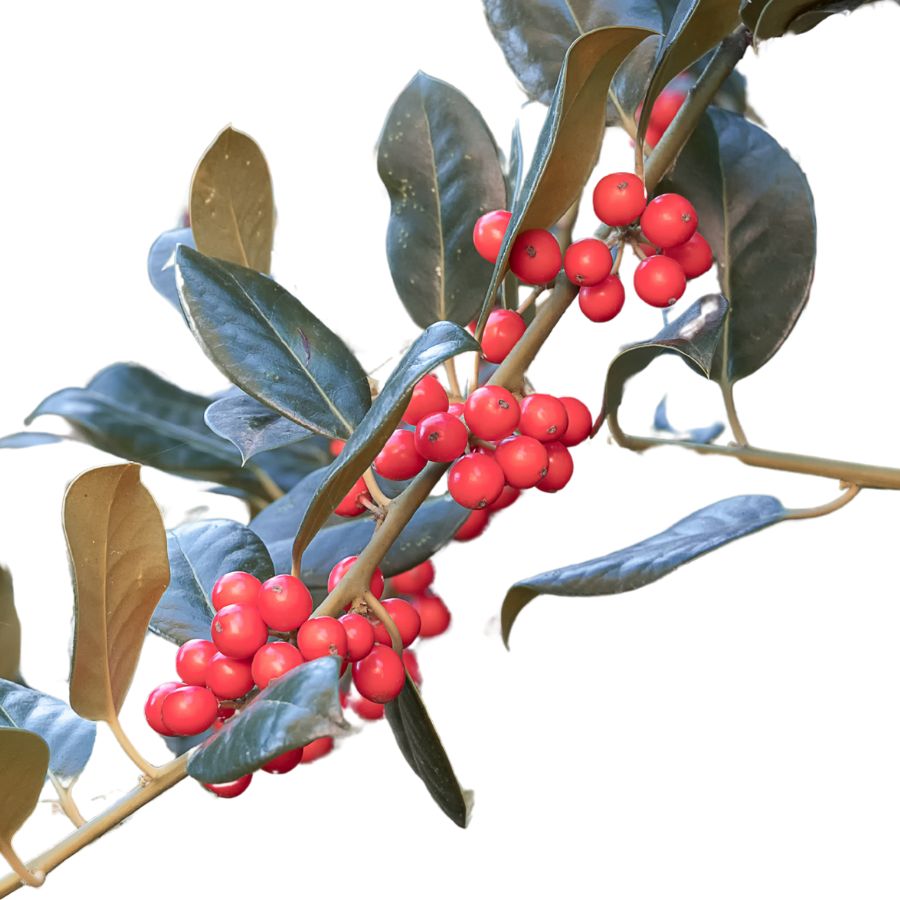
Buffaloberries grow in loose clusters along thorny shrubs and have a distinctive silvery sheen on both the leaves and the skin of the fruit. Their small red or orange berries are covered in tiny white dots and feel gritty between your fingers.
The taste is sharp, bitter-tart, and slightly astringent when raw, but it mellows with cooking. Many people boil the fruit into a thick syrup or cook it down into jam.
Don’t confuse them with bearberry or snowberry—those have smooth berries and very different leaf shapes. Buffaloberries always have that signature speckled look and a distinctive sour kick that sets them apart.
The fruit contains saponins, which foam when cooked but aren’t harmful in moderate amounts. You’ll want to avoid the leaves and stems entirely, as they’re not considered edible.
Golden Currant (Ribes aureum)
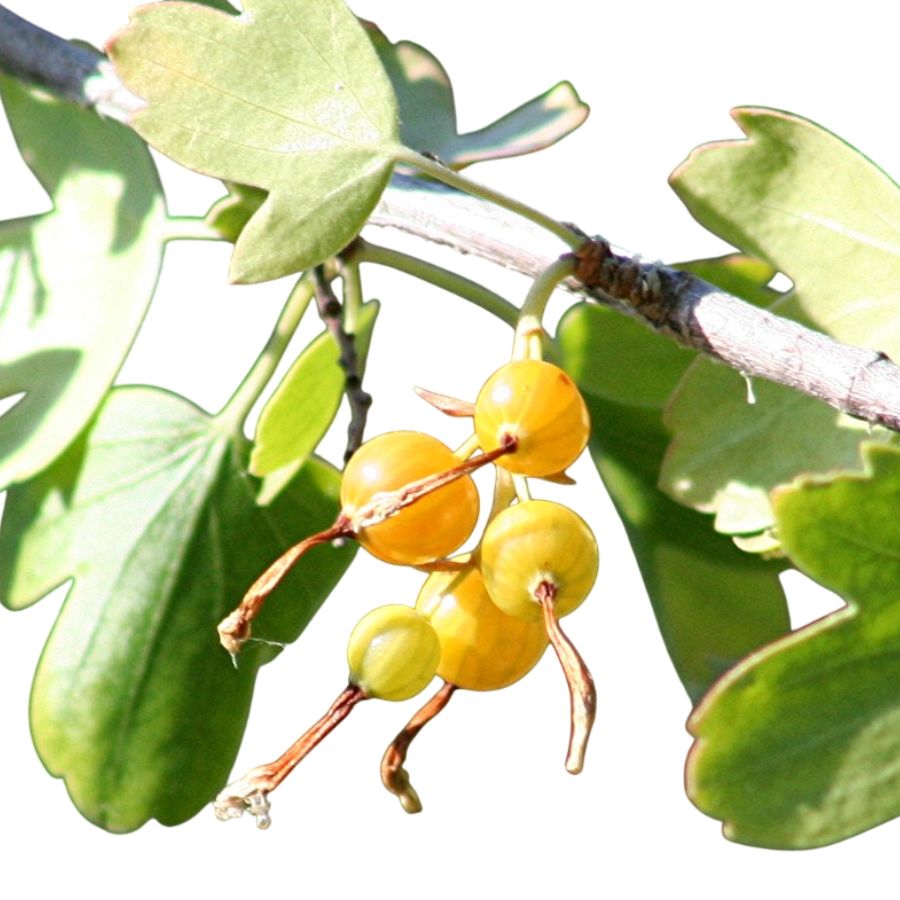
Golden currants produce small, round berries with smooth skin and a color range that includes golden yellow, red, and deep purple. Their flavor is tangy, slightly sweet, and develops a deeper complexity when cooked down.
The berries are edible raw, but you’ll probably want to use them in syrups, sauces, or dried into snacks. Some people dehydrate them like raisins, though they’re smaller and more tart.
Leaves are palmately lobed and lightly scented, which helps set golden currants apart from potentially toxic lookalikes like some ornamental currant hybrids. Those lookalikes often lack the same strong fragrance and have less pronounced lobing on the leaves.
Don’t eat the unripe berries in large amounts, as they can be harsh on the stomach. Fermenting the juice was a traditional method of preservation among various communities, adding a unique use to its culinary profile.
American Plum (Prunus americana)
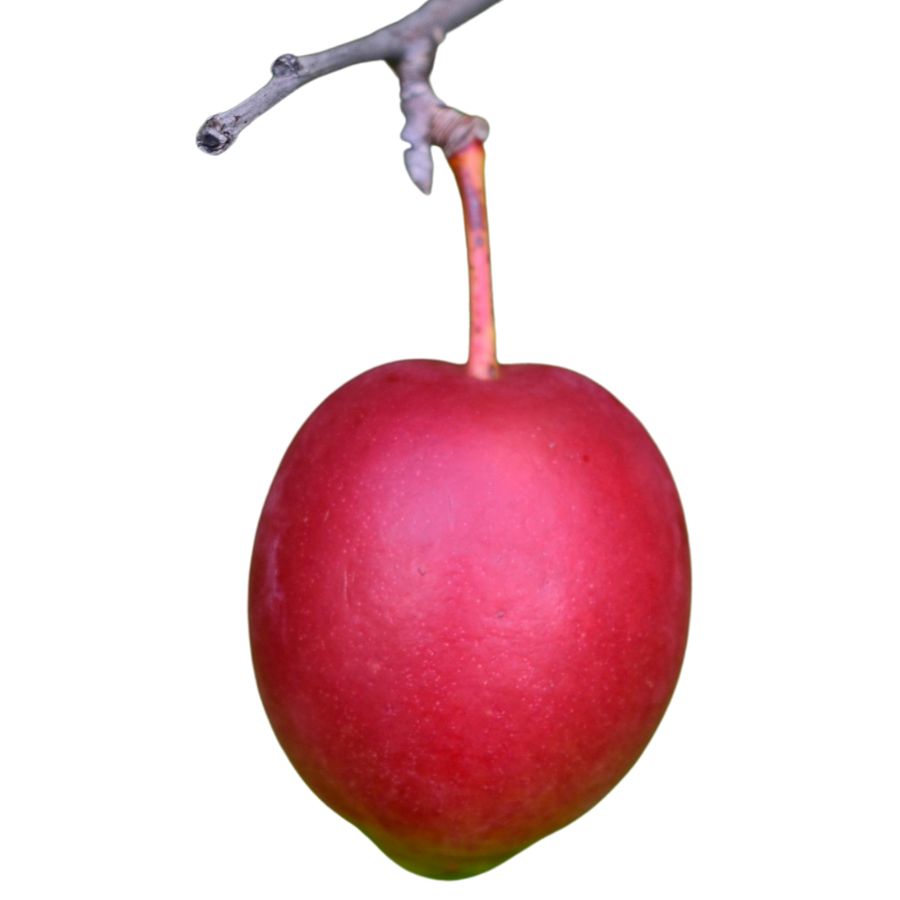
American plum, also called wild plum or river plum, produces small round fruits that range in color from yellow to deep red when ripe. The skin is slightly tart, but the flesh is soft, juicy, and sweet with a hint of spice.
You can eat the fruit raw or turn it into jellies, sauces, or wines—its natural pectin makes it ideal for preserves. Just avoid the seeds and leaves, which contain compounds that can release cyanide when crushed or chewed.
Its bark is rough and dark, and the branches often have short, sharp spines. The plant’s simple oval leaves and white spring flowers help distinguish it from less edible lookalikes like black cherry, which has longer, narrower leaves with a more bitter fruit.
If the fruit has a strong bitter almond smell when crushed, steer clear—it might be a different species altogether. American plum fruit clusters tend to be smaller and more tightly packed than those of cultivated varieties.
Dandelion (Taraxacum officinale)
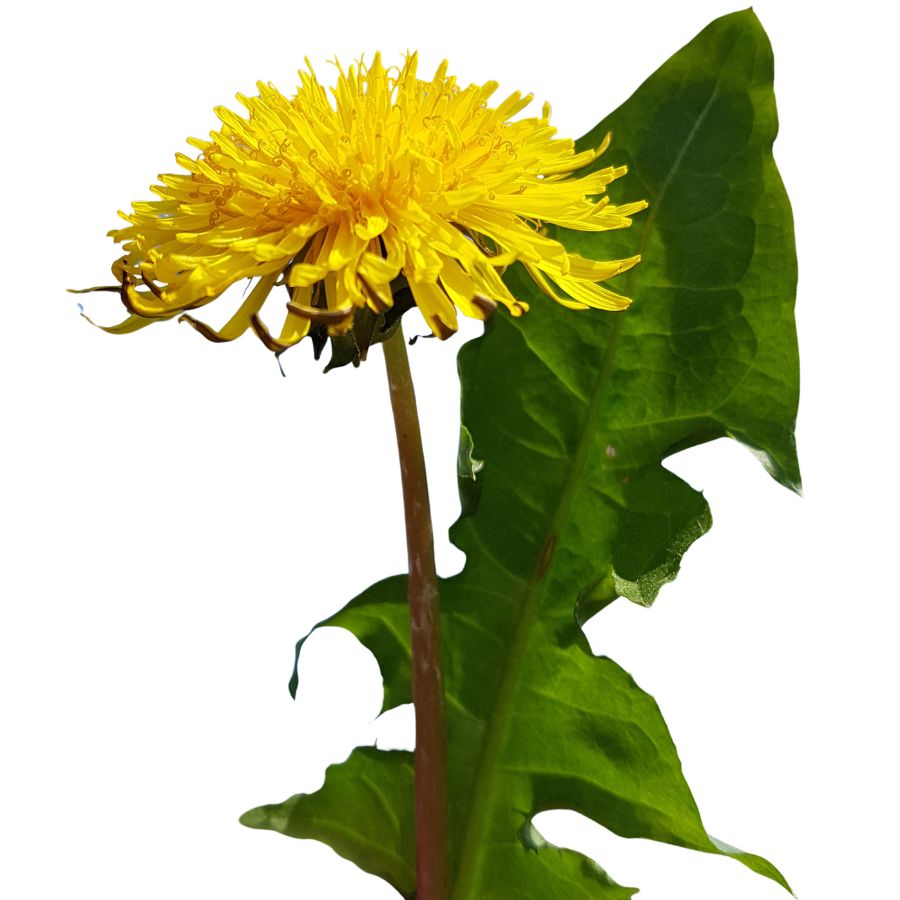
Bright yellow flowers and jagged, deeply toothed leaves make dandelions easy to spot in open fields, lawns, and roadsides. You might also hear them called lion’s tooth, blowball, or puffball once the flowers turn into round, white seed heads.
Every part of the dandelion is edible, but you will want to avoid harvesting from places treated with pesticides or roadside areas with heavy car traffic. Besides being a food source, dandelions have been used traditionally for simple herbal remedies and natural dye projects.
Young dandelion leaves have a slightly bitter, peppery flavor that works well in salads or sautés, and the flowers can be fried into fritters or brewed into tea. Some people even roast the roots to make a coffee substitute with a rich, earthy taste.
One thing to watch out for is cat’s ear, a common lookalike with hairy leaves and branching flower stems instead of a single, hollow one. To make sure you have a true dandelion, check for a smooth, hairless stem that oozes a milky sap when broken.
Stinging Nettle (Urtica dioica)
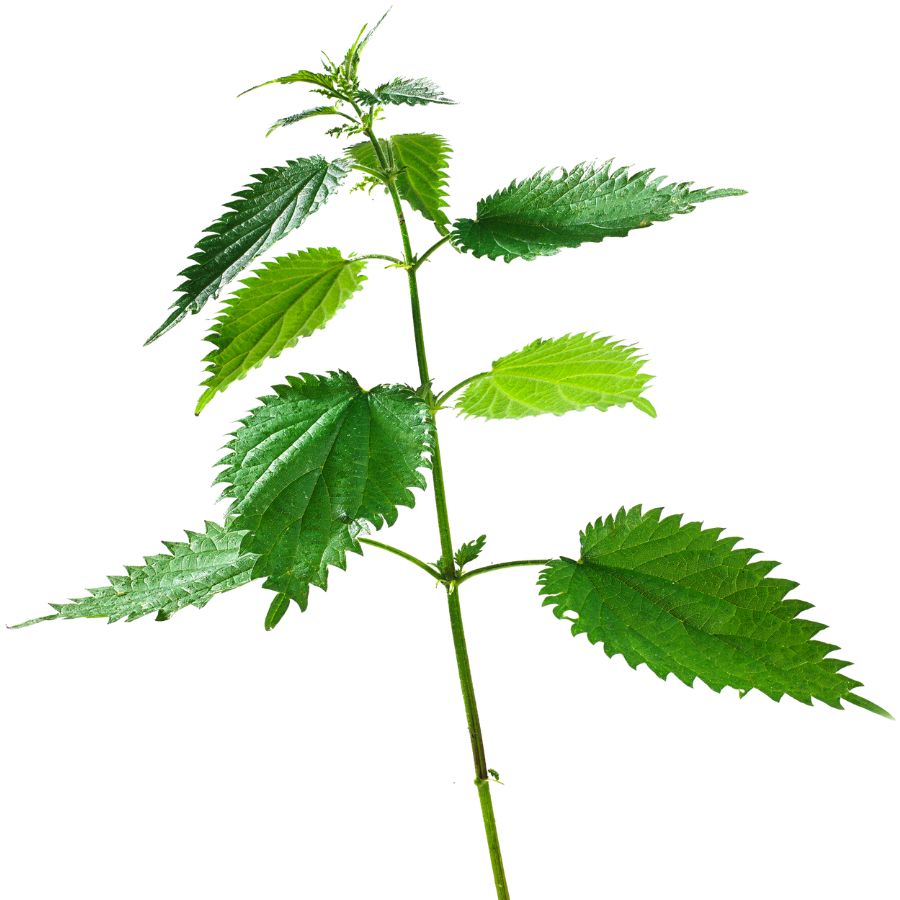
Stinging nettle is also known as burn weed or devil leaf, and it definitely earns those names. The tiny hairs on its leaves and stems can leave a painful, tingling rash if you brush against it raw, so always wear gloves when handling it.
Once it’s cooked or dried, those stingers lose their punch, and the leaves turn mild and slightly earthy in flavor. The texture softens too, making it a solid substitute for spinach in soups, pastas, or even as a simple sauté.
The young leaves and tender tops are what you want to collect. Avoid the tough lower stems and older leaves, which can be gritty or unpleasant to chew.
Some people confuse stinging nettle with purple deadnettle or henbit, but those don’t sting and have more rounded, fuzzy leaves. If the plant doesn’t make your skin react, it’s not stinging nettle.
Cattail (Typha latifolia)
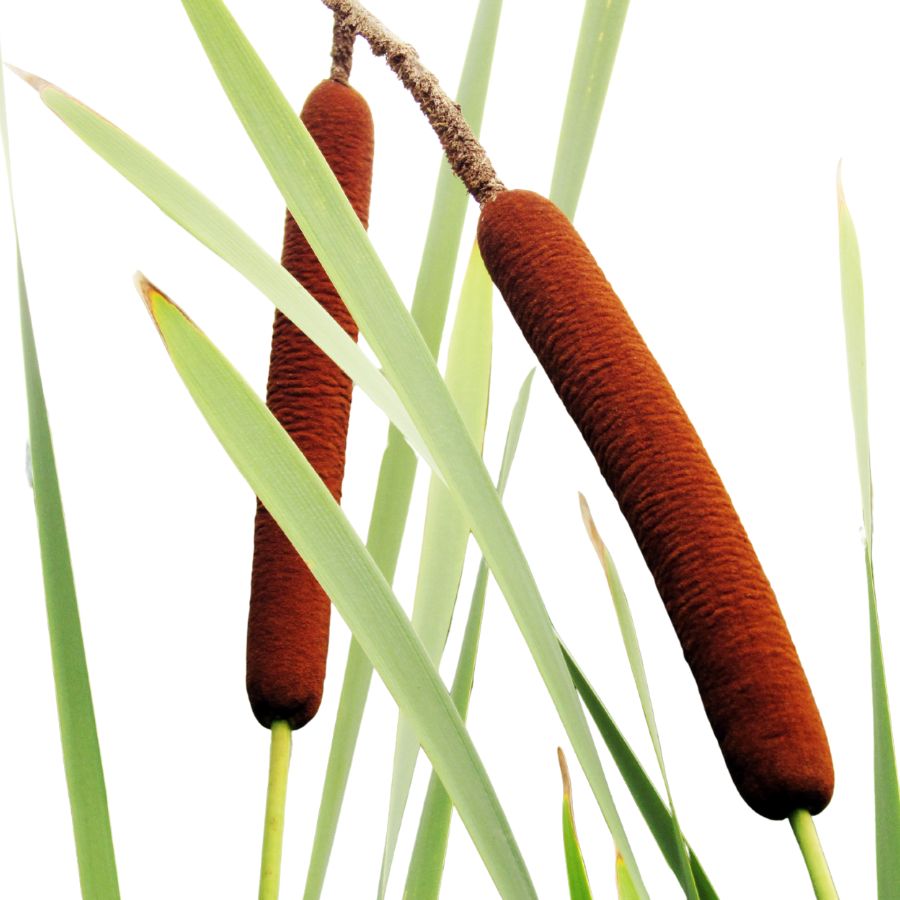
Cattails, often called bulrushes or corn dog grass, are easy to spot with their tall green stalks and brown, sausage-shaped flower heads. They grow thickly along the edges of ponds, lakes, and marshes, forming dense stands that are hard to miss.
Almost every part of the cattail is edible, including the young shoots, flower heads, and starchy rhizomes. You can eat the tender shoots raw, boil the flower heads like corn on the cob, or grind the rhizomes into flour for baking.
Besides food, cattails have long been used for making mats, baskets, and even insulation by weaving the dried leaves and using the fluffy seeds. Their combination of usefulness and abundance has made them an important survival plant for many cultures.
One thing you need to watch for is young cattail shoots being confused with similar-looking plants like iris, which are toxic. A real cattail shoot will have a mild cucumber-like smell when you snap it open, while iris plants smell bitter or unpleasant.
Watercress (Nasturtium officinale)
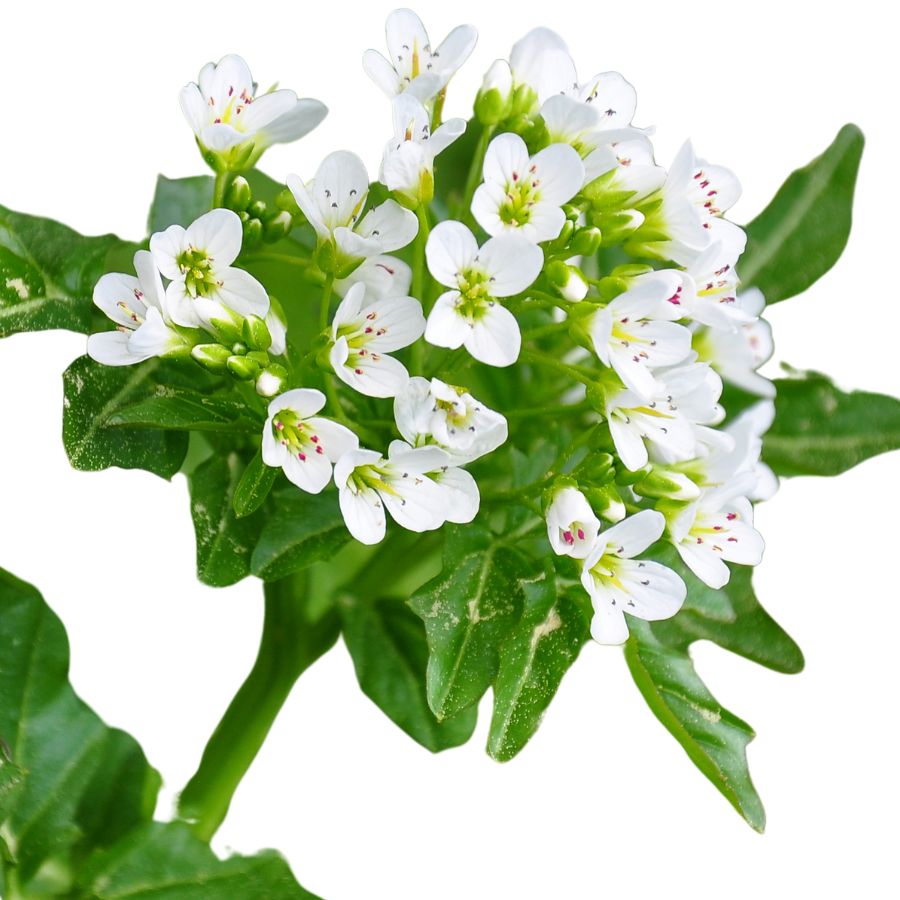
Watercress, also known as yellowcress or garden cress, is an aquatic plant with small, rounded green leaves and hollow stems that often float along the water’s surface. It usually grows in dense mats, and the bright green color is one of the easiest ways to spot it in clear, shallow streams and ponds.
Besides being a popular edible green, watercress has been traditionally used in herbal remedies, especially for boosting digestion and respiratory health.
The leaves and stems are edible, offering a crisp texture and a peppery, slightly spicy taste that can remind you of arugula. People often enjoy it raw in salads, blended into soups, or lightly wilted into stir-fries for a fresh bite.
Stick to eating the leaves and stems, and avoid any parts that look yellowed or slimy, since healthy watercress should always look vibrant and clean.
Watercress has a few lookalikes like lesser celandine or young wild mustard, but true watercress has a distinct sharp flavor and tends to grow only in moving, clean water. Always double-check your identification, because gathering from stagnant or contaminated water sources can expose you to harmful bacteria or parasites.
Arrowleaf Balsamroot (Balsamorhiza sagittata)
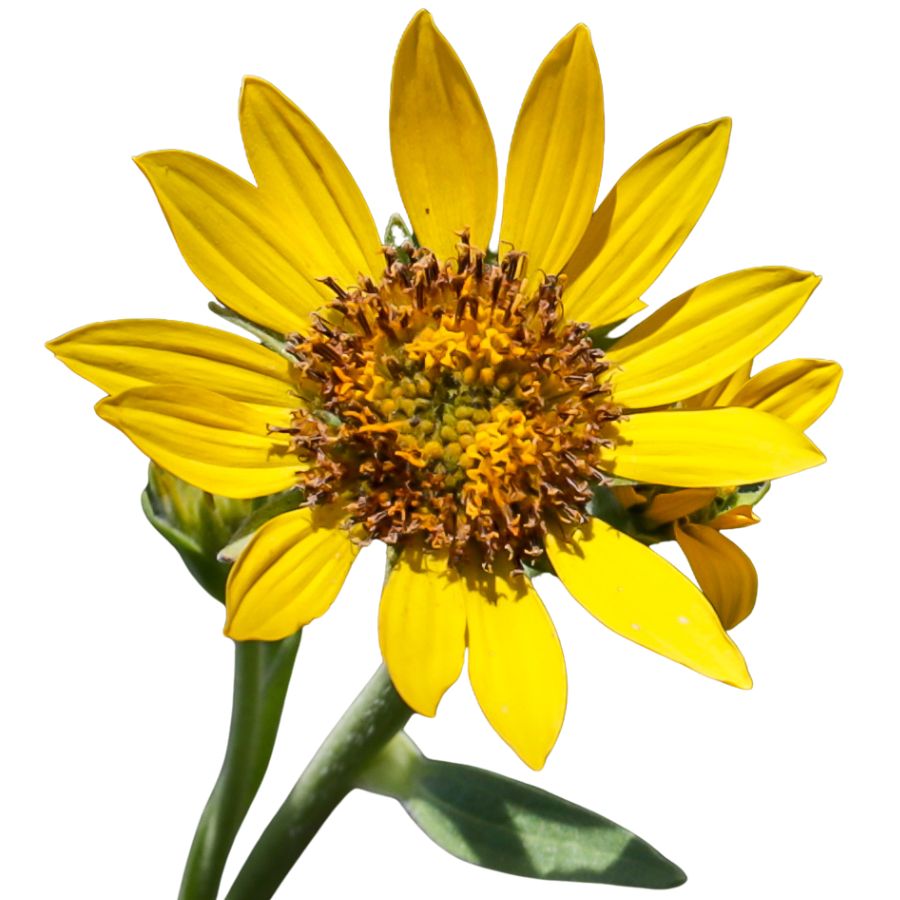
If you break open the root of arrowleaf balsamroot, the strong, piney smell is the first thing you’ll notice. That scent alone is a good way to tell it apart from lookalikes like mule’s ears, which lack the resinous aroma and have smoother leaves.
The root, leaves, and seeds of the of arrowleaf balsamroot are all edible, though the root is usually cooked to mellow its sharp, medicinal flavor. The young leaves are better raw than older ones, which get tough and bitter.
Its flower resembles a small sunflower, with bright yellow rays and a center that matures into edible seeds. The thick leaves grow low to the ground and are covered in fine hairs that give them a soft texture.
You can roast or steam the root, or even dry it and grind it down for flour in a pinch. The flavor isn’t for everyone, but when prepared right, it adds an earthy depth to stews and soups.
Prairie Turnip (Pediomelum esculentum)
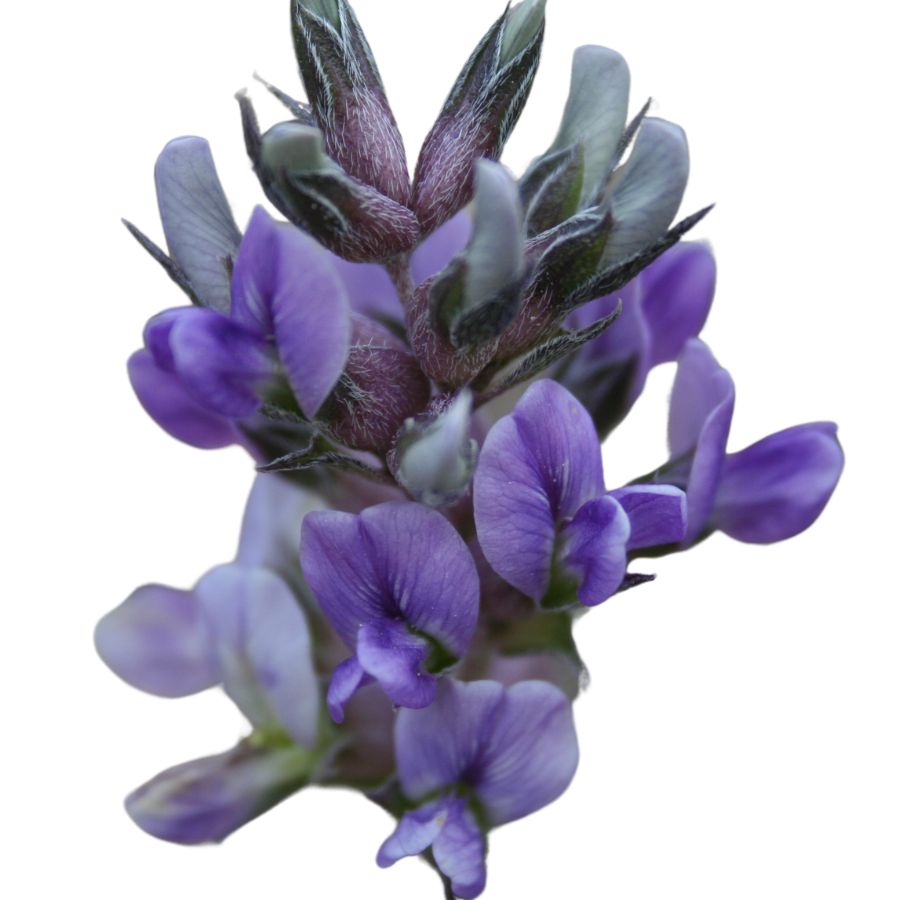
Prairie turnips grow low to the ground and produce a pale purple flower, but it’s the starchy root you want. The roots are egg-shaped, about the size of a chicken egg, and peel easily once cooked.
You’ll notice they taste mildly sweet, something between a parsnip and a chestnut, with a slightly grainy texture. Most people roast, boil, or dry them into flour for later use.
Some species of wild Psoralea look similar, but their roots are either too small or too bitter to bother with. Prairie turnip leaves are deeply divided into five leaflets, which helps set them apart from inedible relatives.
The root is the only edible part—everything above ground is fibrous and not suitable for eating. If you dry the root slices well, they store for months without spoiling.
Sand Cherry (Prunus pumila)
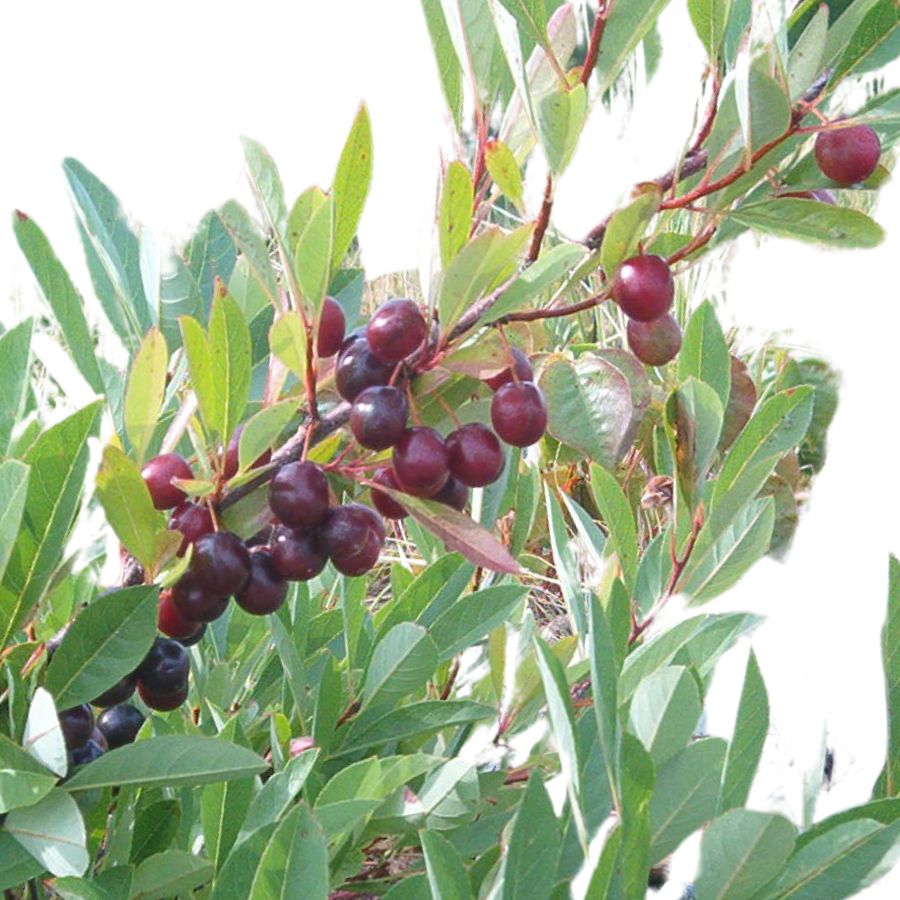
Small and bushy, sand cherry bushes produce dark purple to black fruits that are edible raw or cooked. The cherries grow low to the ground and tend to appear in clusters on woody shrubs with slender, grayish stems.
The fruit has a sweet, mildly astringent taste with a soft, juicy texture that’s great in jams or sauces. You can pit and simmer them down with sugar, or dry them for later use.
Their leaves are long, narrow, and pointed with finely toothed edges—different from the more oval leaves of chokecherry, which is toxic in quantity if the pits are crushed. Sand cherry pits should not be consumed, as they contain cyanogenic compounds like many wild cherries.
The skin is thin, and the flesh clings tightly to the pit, so you’ll need to strain it if you’re making jelly. People sometimes use them to flavor wild syrups or ferment into wine for a tart finish.
Fireweed (Chamerion angustifolium)
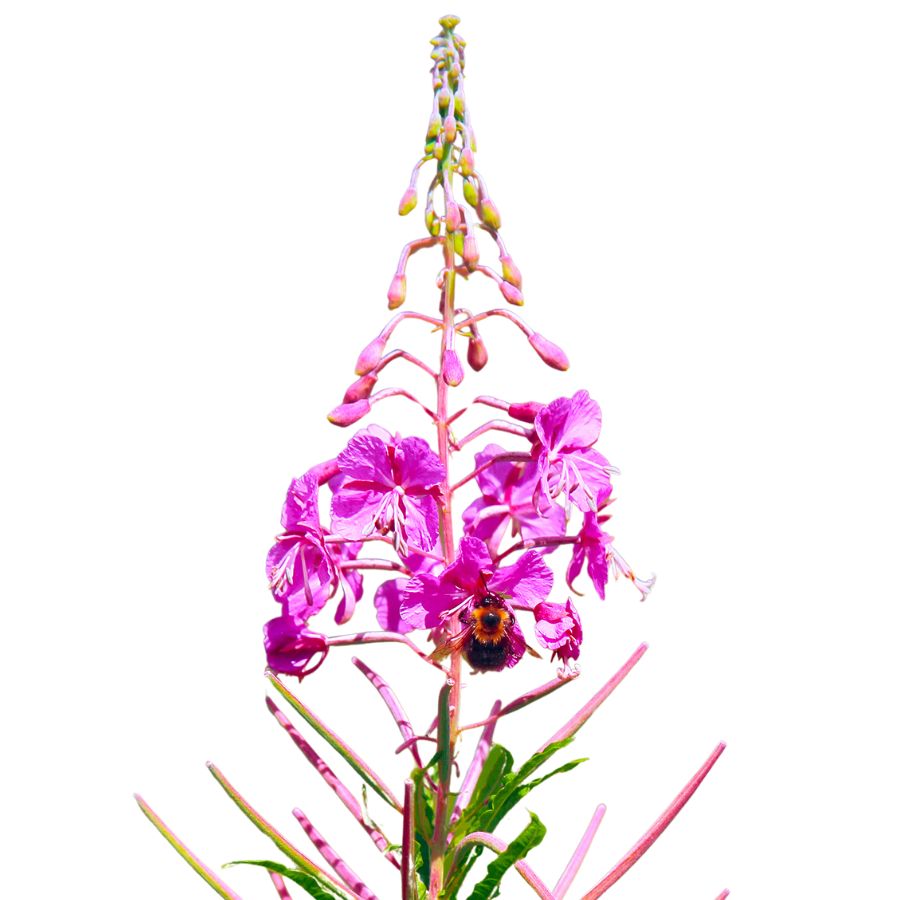
Fireweed produces a spike of bright fuchsia flowers and grows in tall, narrow stands with alternating leaves that taper to a point. The stem often has a reddish hue and a soft fuzz that runs along its surface.
The inner pith of mature stalks is edible and has a faintly sweet flavor, especially when eaten raw. Early shoots can be treated like asparagus—grilled, steamed, or added to stir-fries.
While the plant is generally safe, be cautious not to gather it near roadsides or areas that have been sprayed, as the plant readily colonizes disturbed ground. Fireweed does have a few lookalikes, but most lack the flower’s distinct four-petal shape and central tufted stigma.
The blossoms are sometimes added raw to fruit dishes or frozen into ice cubes for color, and the leaves can be dried and used as a tea substitute. Stick to the younger parts if you want the best texture and flavor.
Common Mallow (Malva neglecta)
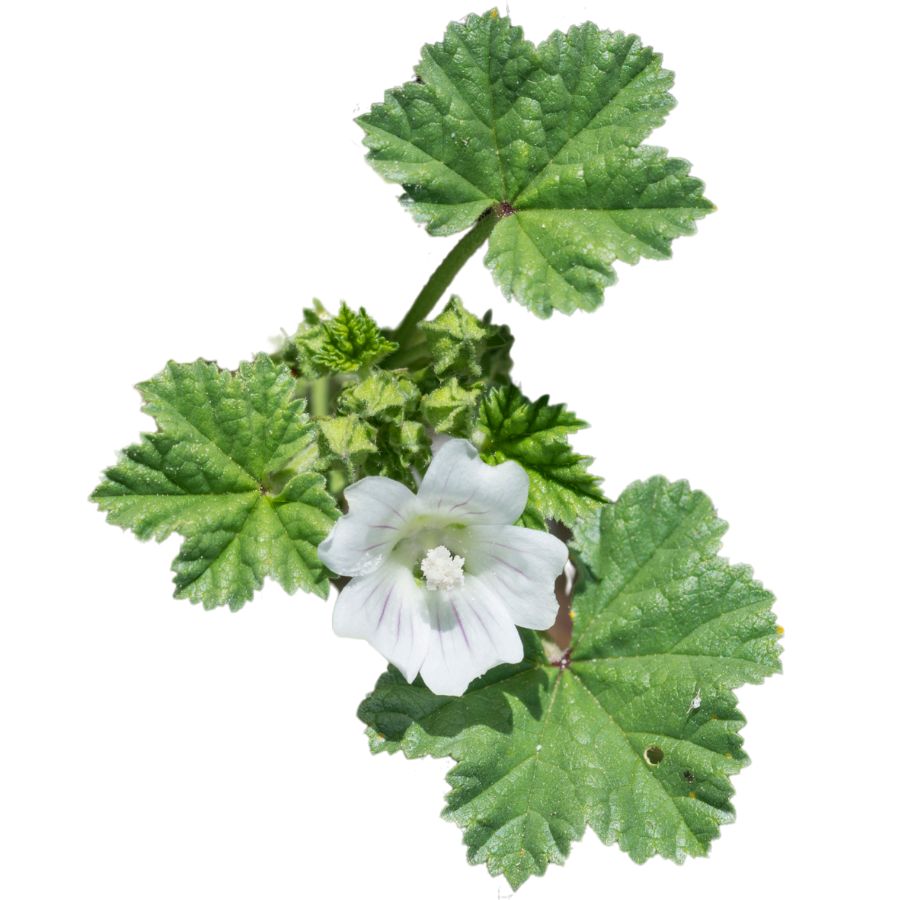
Mallow, often called common mallow or cheeseweed, grows low to the ground and spreads with round, crinkled leaves that look a bit like tiny lily pads. It produces small pale purple or pink flowers with five delicate petals, and the seed pods are shaped like little green wheels.
The leaves, flowers, and immature seed pods of mallow are all edible, offering a mild, slightly sweet flavor and a soft, somewhat mucilaginous texture. Some people add the leaves to salads, toss them into soups for thickening, or quickly sauté them with garlic for a simple side dish.
When gathering mallow, make sure you do not confuse it with young deadly nightshade plants, which can sometimes grow in similar weedy areas but have very different flower and fruit structures. Mallow is safe to eat, but it tends to absorb pollutants from the soil, so be cautious about harvesting from roadsides or contaminated areas.
An interesting thing about mallow is that it was traditionally used for soothing sore throats and irritated skin because of its natural slimy quality. If you are foraging for food and medicine, mallow is a versatile and easy plant to start with once you are confident in your identification.
Pigweed (Amaranthus retroflexus)
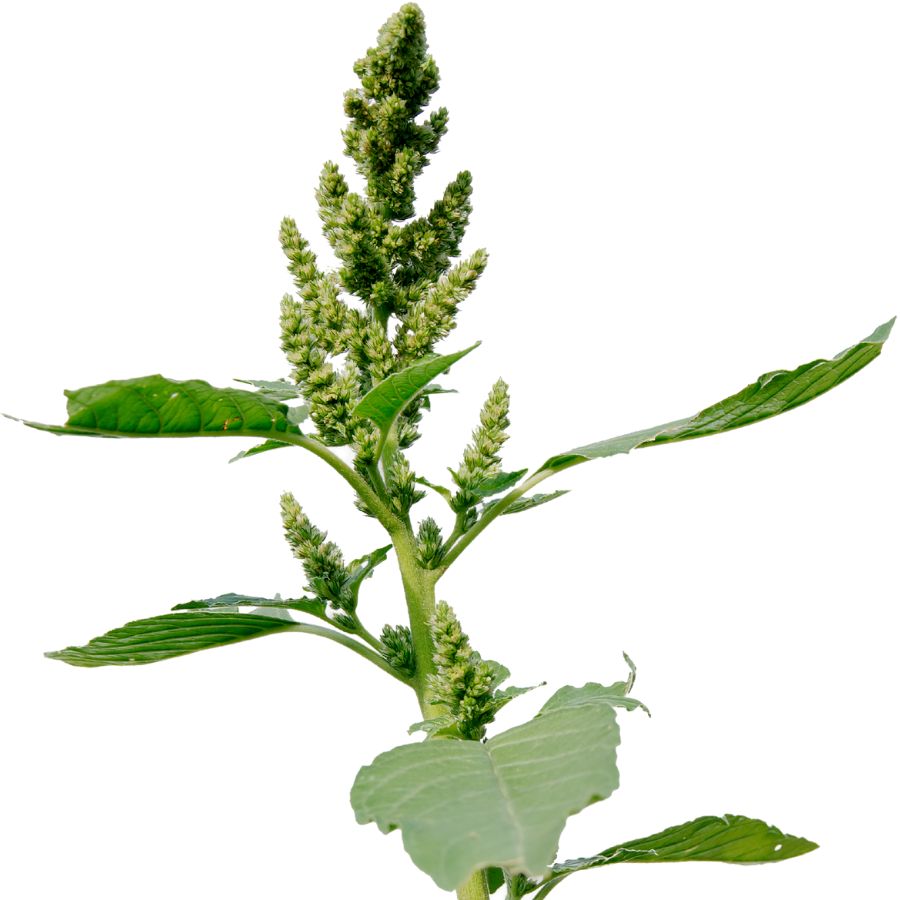
You’ve probably seen redroot pigweed—often called red-root amaranth or common amaranth—sprouting in vacant lots, gardens, or even sidewalks, with its dense clusters of greenish flowers and coarse, branching stems. Its leaves are dull green and oval-shaped with a slight point, and its thick taproot is usually red.
The young leaves and stems cook down well into soups, stir-fries, or stews, and the texture becomes silky once wilted. Raw, they can be bitter, but the bitterness fades after blanching or sautéing with oil and salt.
Don’t confuse it with spiny amaranth, which has small, rigid spines at the leaf nodes—those are absent on pigweed. While pigweed is edible, it’s best to avoid plants from contaminated soils, since it absorbs heavy metals and herbicide residue.
The seeds, though tiny, can be collected in bulk and toasted or added to grain dishes. You can also sprout them for a slightly nutty taste, but be aware the seedheads can be hard to clean due to their chaff.
Meadow Salsify (Tragopogon pratensis)
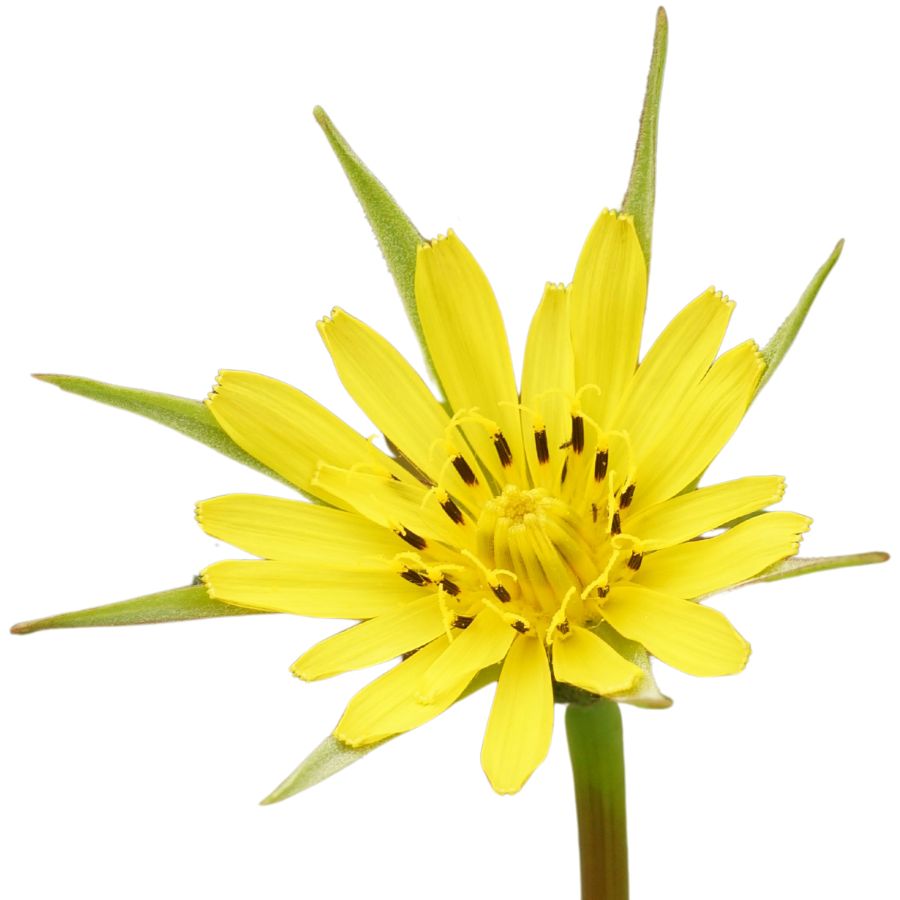
Meadow salsify has bright yellow, dandelion-like flowers and long, grass-like leaves that grow from a single stem. Its flower head closes by midday, which helps set it apart from dandelions and other similar-looking wild plants.
The swollen root can be peeled and eaten raw or roasted, with a mildly sweet, nutty flavor and a texture similar to parsnip. Young shoots are edible as well, though tougher leaves should be cooked to reduce bitterness.
Its seed head resembles a giant dandelion puffball, but it’s much larger and more globe-shaped. This puffball stage is often mistaken for goatsbeard, but the shape and size of the seed head can help you tell the difference.
While all edible parts should be harvested before they toughen or go to seed, avoid any plants near roadsides or polluted areas due to contamination risks. There’s no danger from toxic lookalikes, but correct identification is still important.
Cow Parsnip (Heracleum maximum)

You’ll recognize cow parsnip by its massive leaves, deeply lobed and hairy, paired with thick green stalks that can feel slightly bristly. The flowers bloom in wide, umbrella-like clusters, but the edible parts are the leaf stalks and unopened flower heads.
The plant has a strong aroma, and its taste is similar to a mix of celery and parsley, though it becomes milder when cooked. Steam or boil the shoots, or chop them into soups once peeled and cleaned.
Cow parsnip can look like giant hogweed, which is far more dangerous and causes severe burns—check the flower size and leaf shape carefully. Hogweed has sharper leaf serrations and more angular stems, while cow parsnip’s leaves are broader and its stems more uniformly green.
Only the young above-ground parts are safe to eat, and even then, they need to be cooked to reduce the risk of skin photosensitivity. Handle the raw plant carefully and don’t ingest it uncooked.
Plantain (Plantago major, Plantago lanceolata)
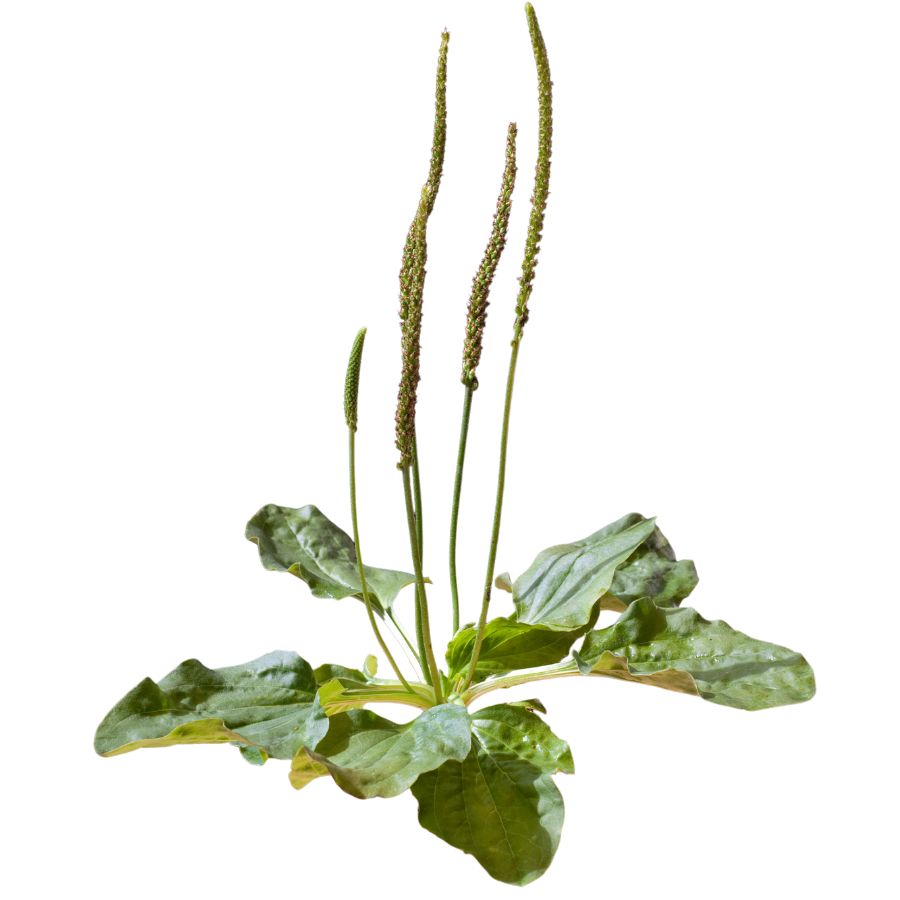
Plantain, also called common plantain or narrowleaf plantain depending on the type, is a low-growing plant with broad or lance-shaped leaves and tall, slender flower spikes. The leaves grow in a rosette close to the ground, and the thick veins running through them are one of the easiest ways to tell it apart from other plants.
You can mainly eat the young leaves and the seeds of the plants. Older leaves can become tough and stringy, so it is best to pick the smaller, tender ones when you want to eat them.
Plantain leaves have a slightly bitter, earthy taste and a chewy texture, especially when eaten raw. Many people like to add them to salads, soups, or stews, or lightly steam them to soften the flavor.
Always make sure you have a true plantain before eating because some similar-looking yard plants are not palatable and can upset your stomach. Look for the strong parallel veins and the tough, fibrous stems to help confirm your find.
Nodding Onion (Allium cernuum)
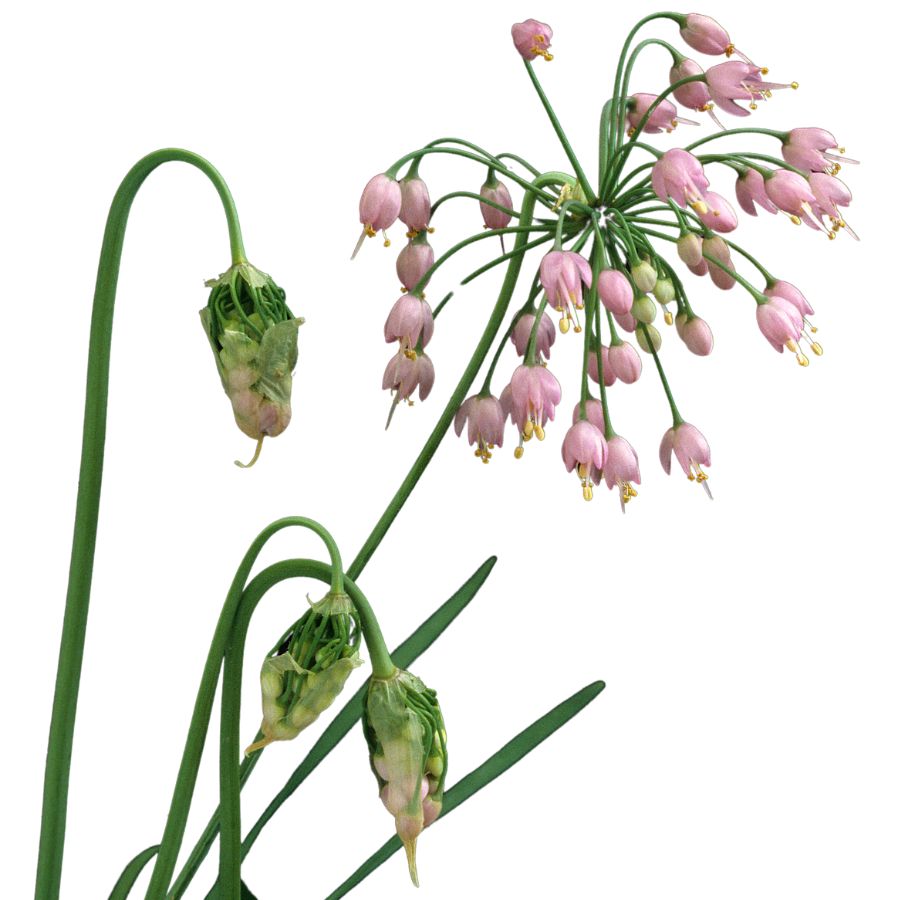
When you come across nodding onions, you’ll notice the drooping flower heads perched on tall, slender stalks. The narrow, grass-like leaves and the pinkish-white blossoms help distinguish them from toxic lookalikes like death camas, which lacks the onion smell when crushed.
You can eat the leaves, bulbs, and flowers, all of which carry a strong onion flavor with a slightly sweet finish. The texture is crisp when raw and softens nicely when sautéed or added to soups.
One popular way to use nodding onions is to mince the greens into spreads or salads, or grill the bulbs whole like scallions. Pickling the flower buds is another method that preserves their tang and adds punch to charcuterie boards.
Avoid harvesting from roadsides or polluted areas, since these plants can absorb contaminants through their roots. While edible, the plant loses flavor quickly after picking, so it’s best to use it fresh whenever possible.
Woods’ Rose (Rosa woodsii)
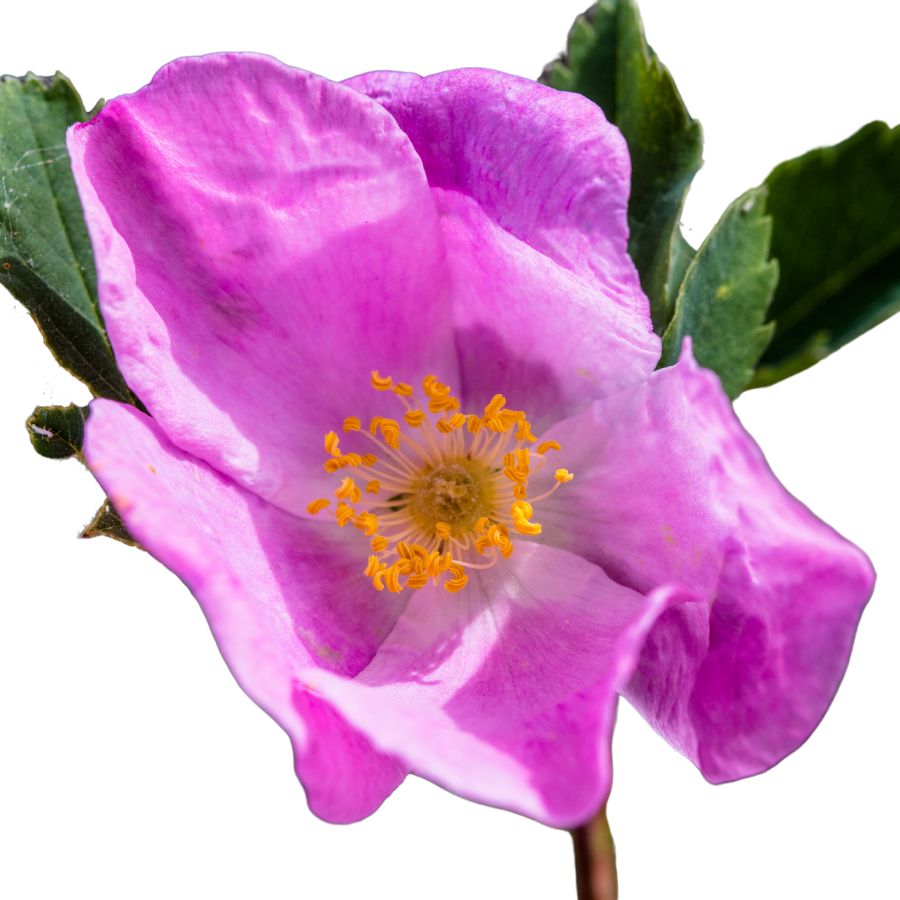
Woods’ rose, also referred to as wild rose or western wild rose, grows as a shrub with pink to deep rose-colored blooms and curved prickles along its stem. Its red-orange hips are round or slightly oval and ripen fully to a firm, leathery texture.
You can eat the hips raw after removing the seeds and tiny hairs, but they’re more palatable when cooked into sauces, used in baked goods, or dried for tea. The flavor is tart, similar to crabapple, and the flesh is dense and chewy when dried.
Rose petals from this plant are also edible and can be eaten fresh or used to flavor vinegars and desserts. Be cautious around rose lookalikes like Japanese rose, which produces similar hips but often has more rigid stems and smoother leaves.
Never ingest the stems or roots—those parts have no food value and can irritate your digestive tract. The hips were used in some traditional food preparations for their nutritional benefits, especially during food-scarce times.
Bearberry (Arctostaphylos uva-ursi)
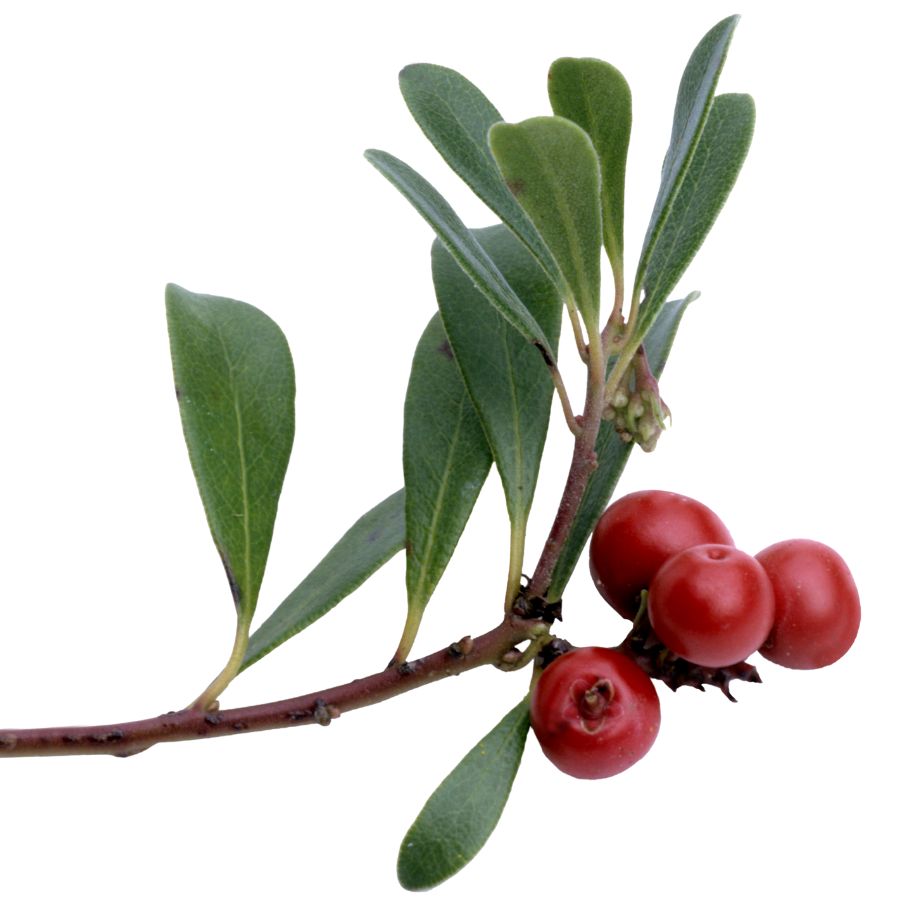
The small, leathery leaves of bearberries are dark green with a slightly glossy surface, forming dense mats close to the ground. These leaves are not edible, but the bright red berries are safe to eat raw or cooked.
Bearberries have a bland, mealy taste with a hint of tartness, often compared to a weak cranberry. They’re commonly dried for storage, turned into jam, or used as a filler in stews or pemmican.
Some people confuse bearberries with lingonberries, but lingonberries grow on taller shrubs and have juicier, more flavorful fruit. Bearberry fruits are dry and floury inside, and their stems are woody and creeping, which helps set them apart.
The berries are safe in moderation, but eating large quantities can upset your stomach. The seeds are edible but gritty, and they tend to pass through your system whole unless you grind or cook them thoroughly.
Toxic Plants That Look Like Edible Plants
There are plenty of wild edibles to choose from, but some toxic native plants closely resemble them. Mistaking the wrong one can lead to severe illness or even death, so it’s important to know exactly what you’re picking.
Poison Hemlock (Conium maculatum)
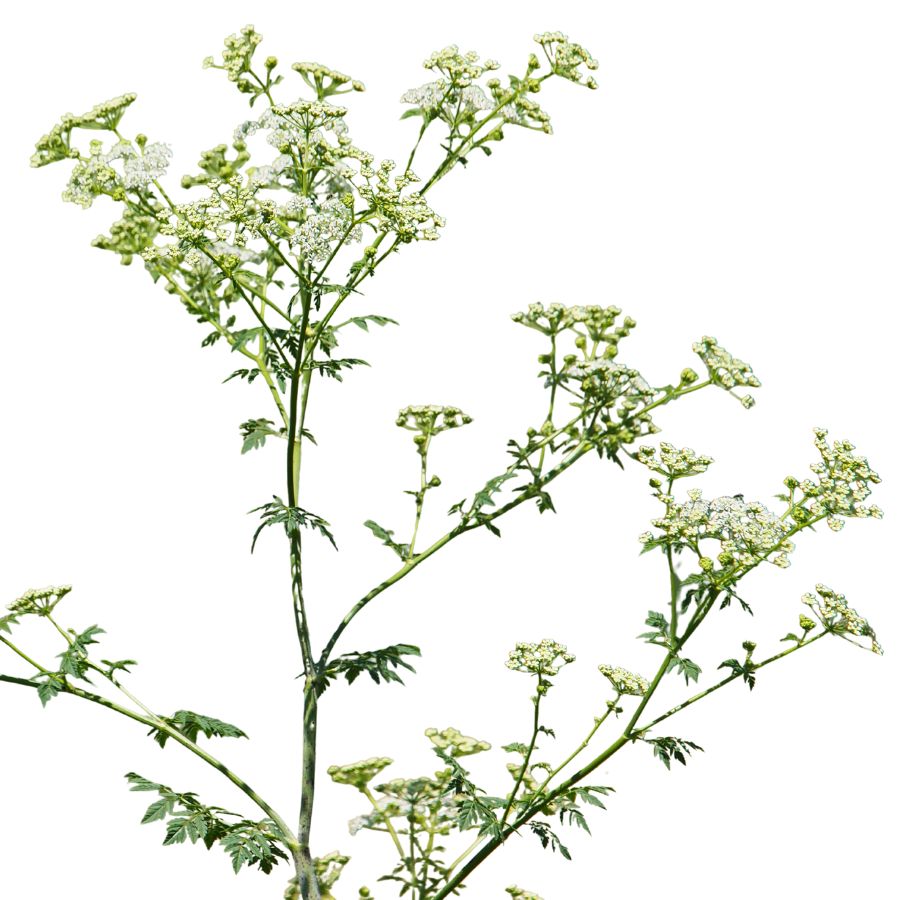
Often mistaken for: Wild carrot (Daucus carota)
Poison hemlock is a tall plant with lacy leaves and umbrella-like clusters of tiny white flowers. It has smooth, hollow stems with purple blotches and grows in sunny places like roadsides, meadows, and stream banks.
Unlike wild carrot, which has hairy stems and a dark central floret, poison hemlock has a musty odor and no flower center spot. It’s extremely toxic; just a small amount can be fatal, and even touching the sap can irritate the skin.
Water Hemlock (Cicuta spp.)
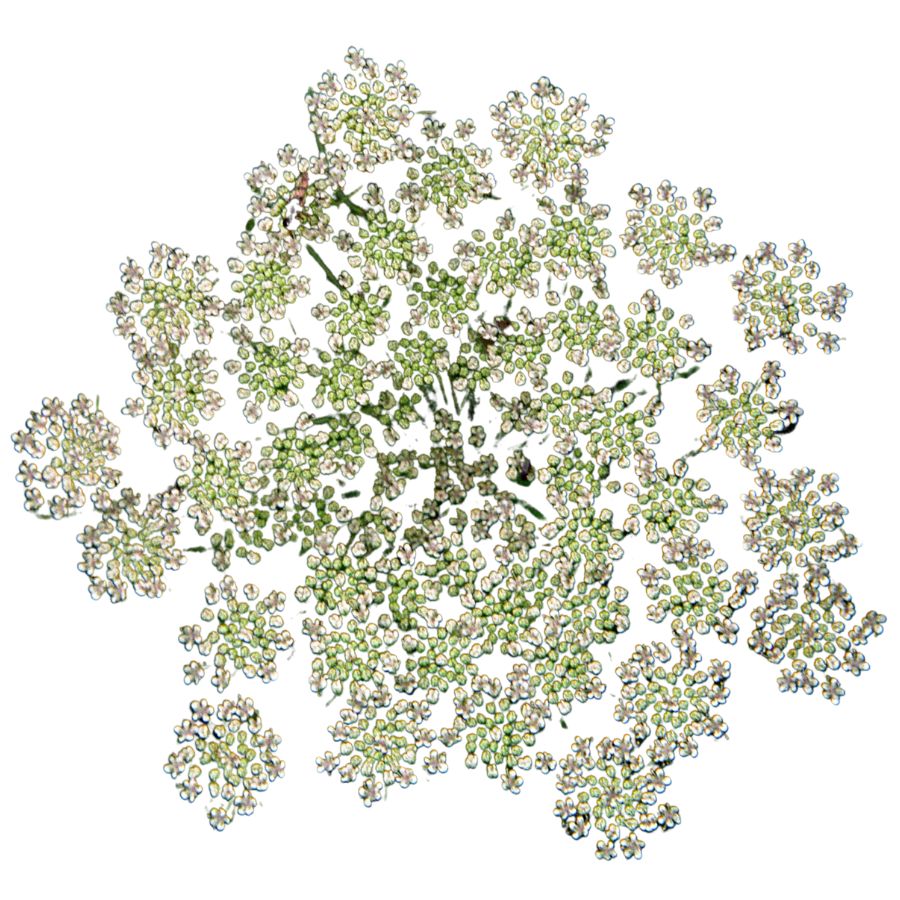
Often mistaken for: Wild parsnip (Pastinaca sativa) or wild celery (Apium spp.)
Water hemlock is a tall, branching plant with umbrella-shaped clusters of small white flowers. It grows in wet places like stream banks, marshes, and ditches, with stems that often show purple streaks or spots.
It can be confused with wild parsnip or wild celery, but its thick, hollow roots have internal chambers and release a yellow, foul-smelling sap when cut. Water hemlock is the most toxic plant in North America, and just a small amount can cause seizures, respiratory failure, and death.
False Hellebore (Veratrum viride)
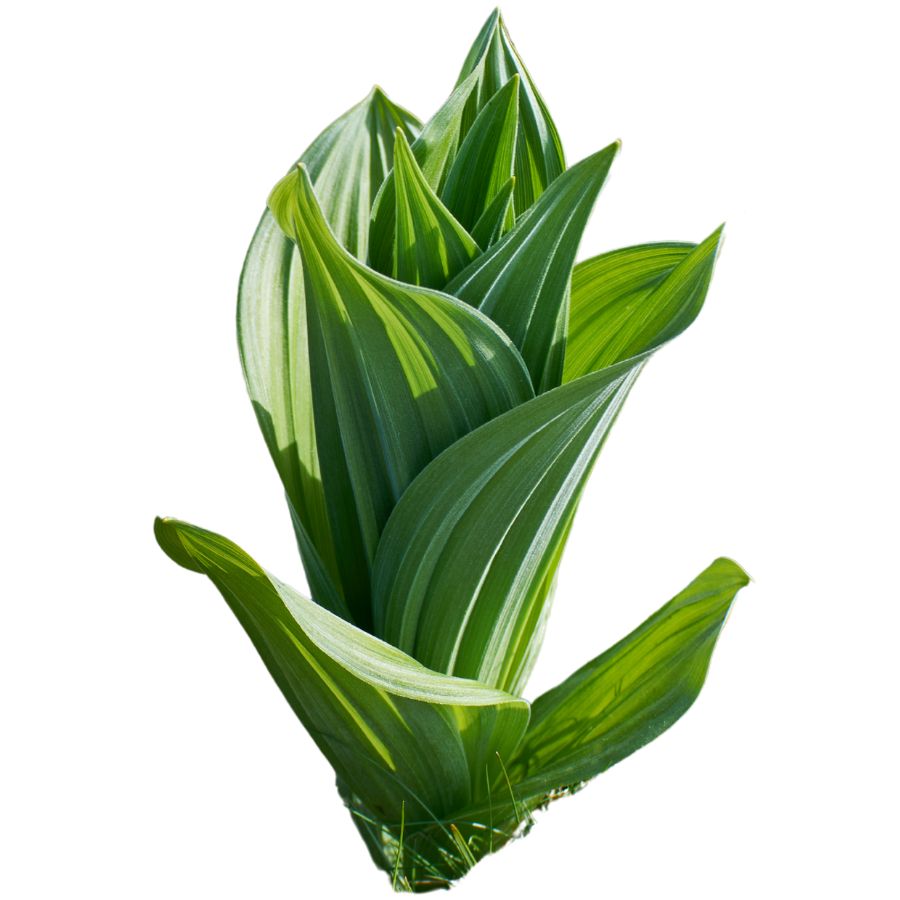
Often mistaken for: Ramps (Allium tricoccum)
False hellebore is a tall plant with broad, pleated green leaves that grow in a spiral from the base, often appearing early in spring. It grows in moist woods, meadows, and along streams.
It’s commonly mistaken for ramps, but ramps have a strong onion or garlic smell, while false hellebore is odorless and later grows a tall flower stalk. The plant is highly toxic, and eating any part can cause nausea, a slowed heart rate, and even death due to its alkaloids that affect the nervous and cardiovascular systems.
Death Camas (Zigadenus spp.)
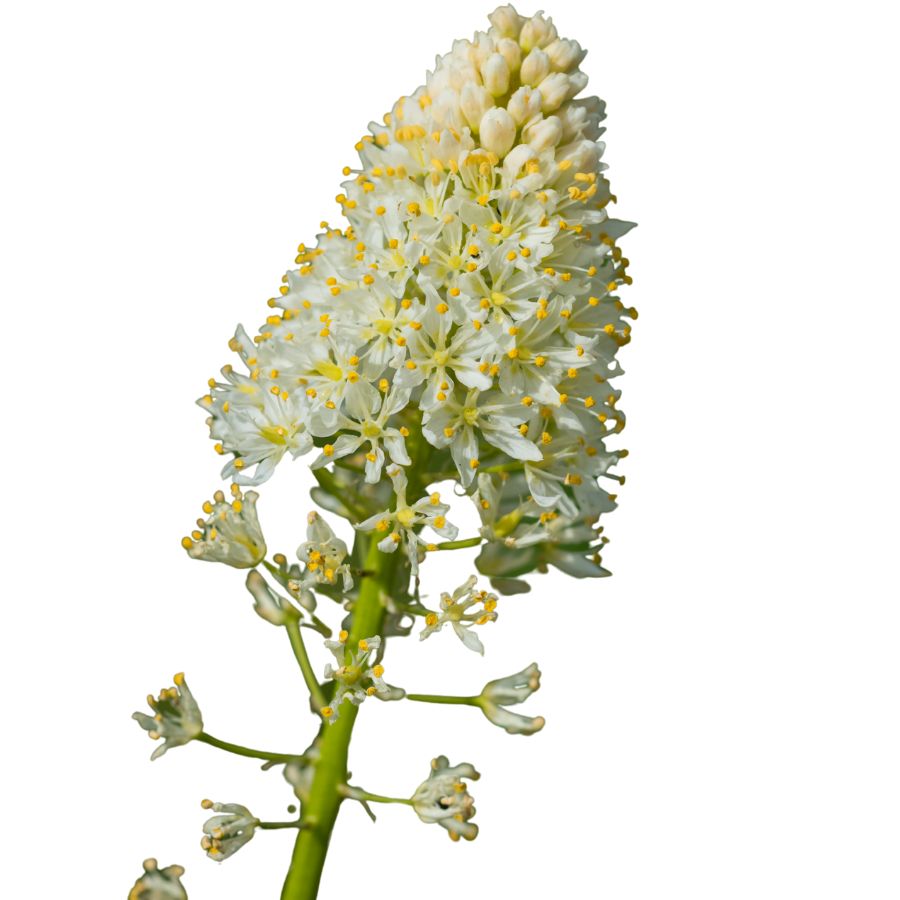
Often mistaken for: Wild onion or wild garlic (Allium spp.)
Death camas is a slender, grass-like plant that grows from underground bulbs and is found in open woods, meadows, and grassy hillsides. It has small, cream-colored flowers in loose clusters atop a tall stalk.
It’s often confused with wild onion or wild garlic due to their similar narrow leaves and habitats, but only Allium plants have a strong onion or garlic scent, while death camas has none. The plant is extremely poisonous, especially the bulbs, and even a small amount can cause nausea, vomiting, a slowed heartbeat, and potentially fatal respiratory failure.
Buckthorn Berries (Rhamnus spp.)
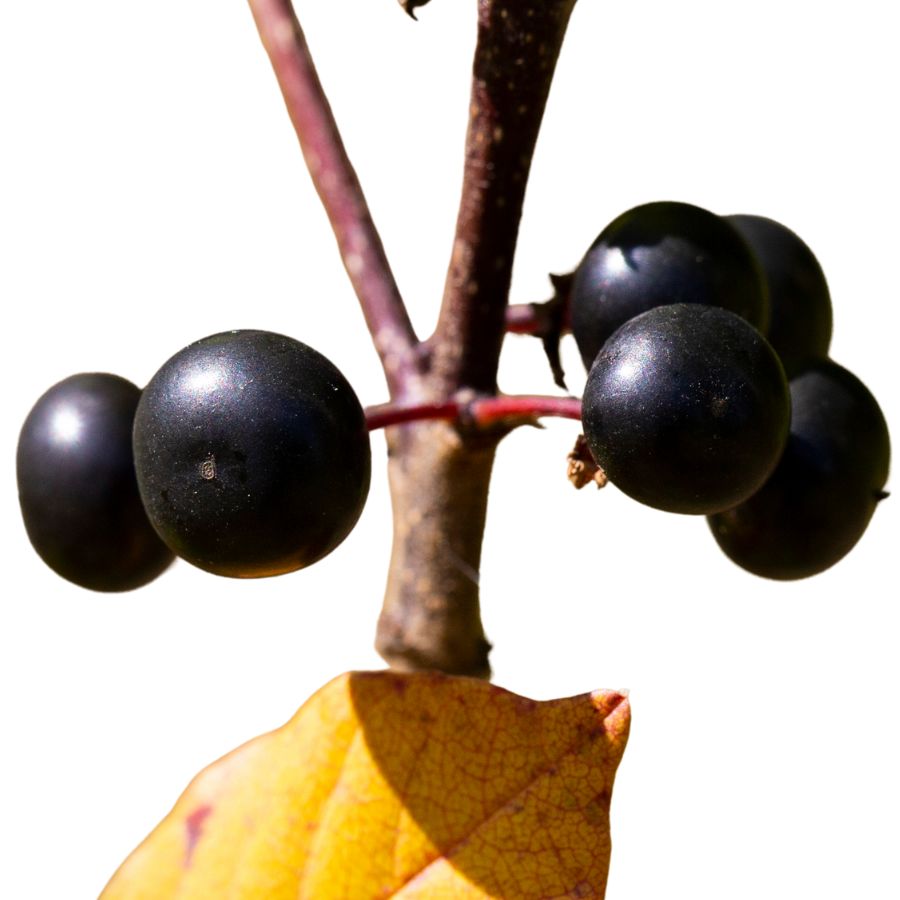
Often mistaken for: Elderberries (Sambucus spp.)
Buckthorn is a shrub or small tree often found along woodland edges, roadsides, and disturbed areas. It produces small, round berries that ripen to dark purple or black and usually grow in loose clusters.
These berries are sometimes mistaken for elderberries and other wild fruits, which also grow in dark clusters, but elderberries form flat-topped clusters on reddish stems while buckthorn berries are more scattered. Buckthorn berries are unsafe to eat as they contain compounds that can cause cramping, vomiting, and diarrhea, and large amounts may lead to dehydration and serious digestive problems.
Mayapple (Podophyllum peltatum)
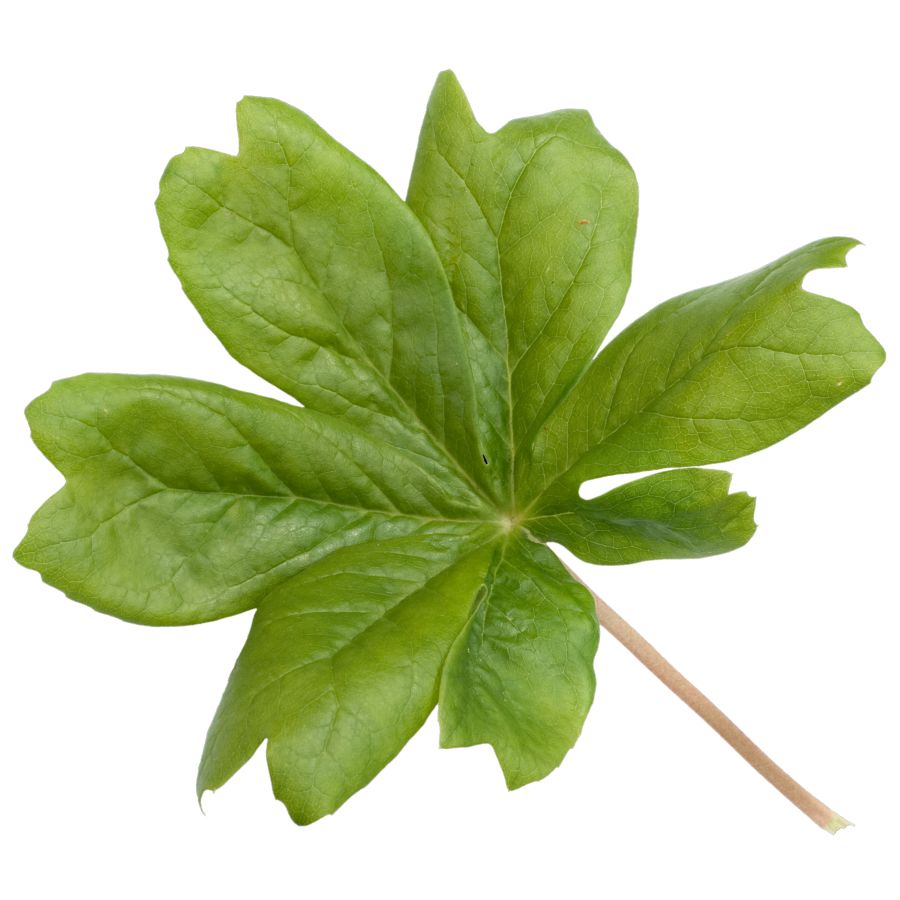
Often mistaken for: Wild grapes (Vitis spp.)
Mayapple is a low-growing plant found in shady forests and woodland clearings. It has large, umbrella-like leaves and produces a single pale fruit hidden beneath the foliage.
The unripe fruit resembles a small green grape, causing confusion with wild grapes, which grow in woody clusters on vines. All parts of the mayapple are toxic except the fully ripe, yellow fruit, which is only safe in small amounts. Eating unripe fruit or other parts can lead to nausea, vomiting, and severe dehydration.
Virginia Creeper (Parthenocissus quinquefolia)
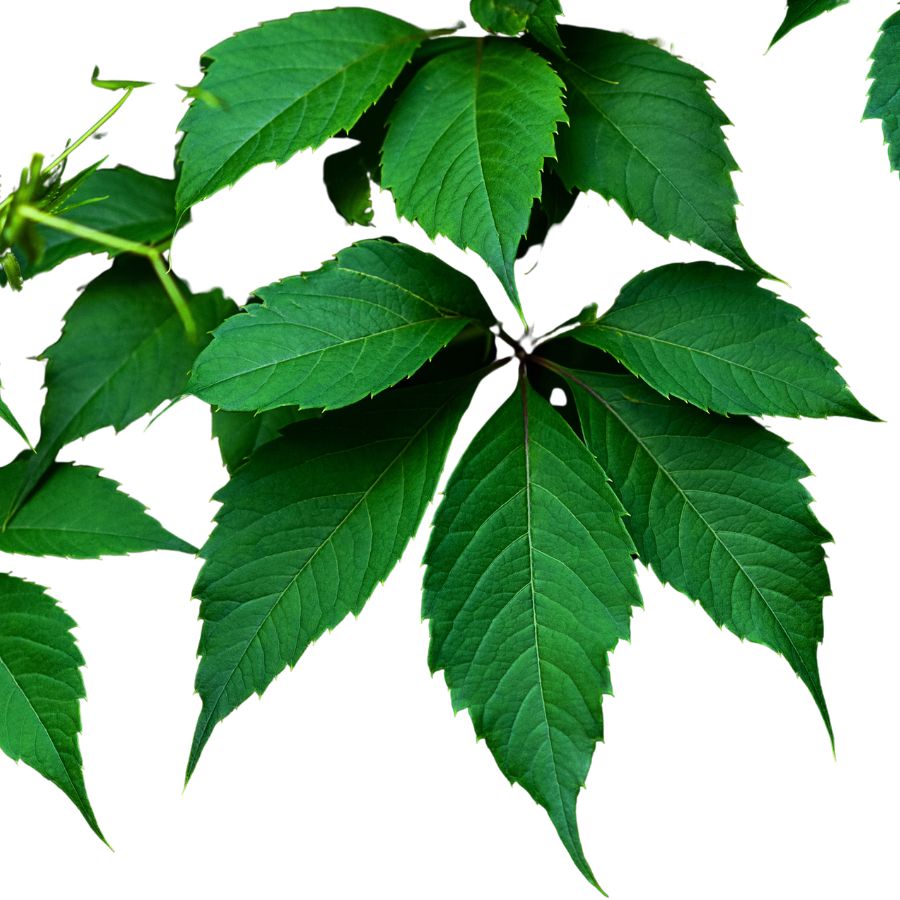
Often mistaken for: Wild grapes (Vitis spp.)
Virginia creeper is a fast-growing vine found on fences, trees, and forest edges. It has five leaflets per stem and produces small, bluish-purple berries from late summer to fall.
It’s often confused with wild grapes since both are climbing vines with similar berries, but grapevines have large, lobed single leaves and tighter fruit clusters. Virginia creeper’s berries are toxic to humans and contain oxalate crystals that can cause nausea, vomiting, and throat irritation.
Castor Bean (Ricinus communis)
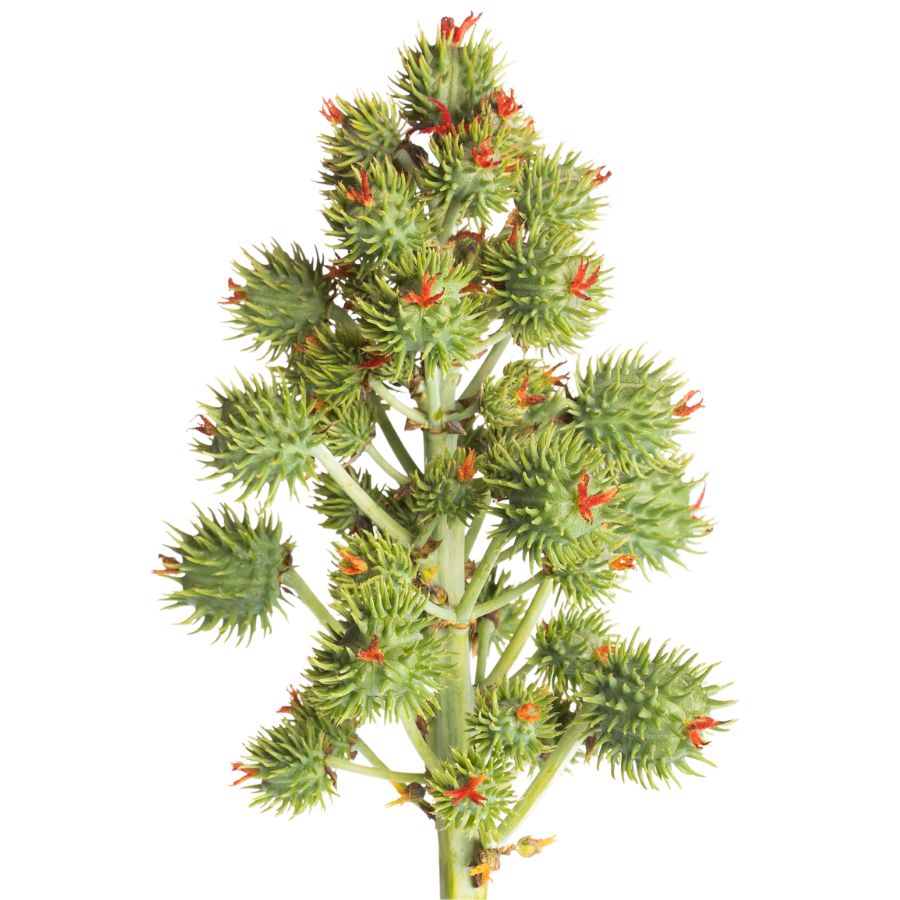
Often mistaken for: Wild rhubarb (Rumex spp. or Rheum spp.)
Castor bean is a bold plant with large, lobed leaves and tall red or green stalks, often found in gardens, along roadsides, and in disturbed areas in warmer regions in the US. Its red-tinged stems and overall size can resemble wild rhubarb to the untrained eye.
Unlike rhubarb, castor bean plants produce spiny seed pods containing glossy, mottled seeds that are extremely toxic. These seeds contain ricin, a deadly compound even in small amounts. While all parts of the plant are toxic, the seeds are especially dangerous and should never be handled or ingested.
A Quick Reminder
Before we get into the specifics about where and how to find these mushrooms, we want to be clear that before ingesting any wild mushroom, it should be identified with 100% certainty as edible by someone qualified and experienced in mushroom identification, such as a professional mycologist or an expert forager. Misidentification of mushrooms can lead to serious illness or death.
All mushrooms have the potential to cause severe adverse reactions in certain individuals, even death. If you are consuming mushrooms, it is crucial to cook them thoroughly and properly and only eat a small portion to test for personal tolerance. Some people may have allergies or sensitivities to specific mushrooms, even if they are considered safe for others.
The information provided in this article is for general informational and educational purposes only. Foraging for wild mushrooms involves inherent risks.
How to Get the Best Results Foraging
Safety should always come first when it comes to foraging. Whether you’re in a rural forest or a suburban greenbelt, knowing how to harvest wild foods properly is a key part of staying safe and respectful in the field.
Always Confirm Plant ID Before You Harvest Anything
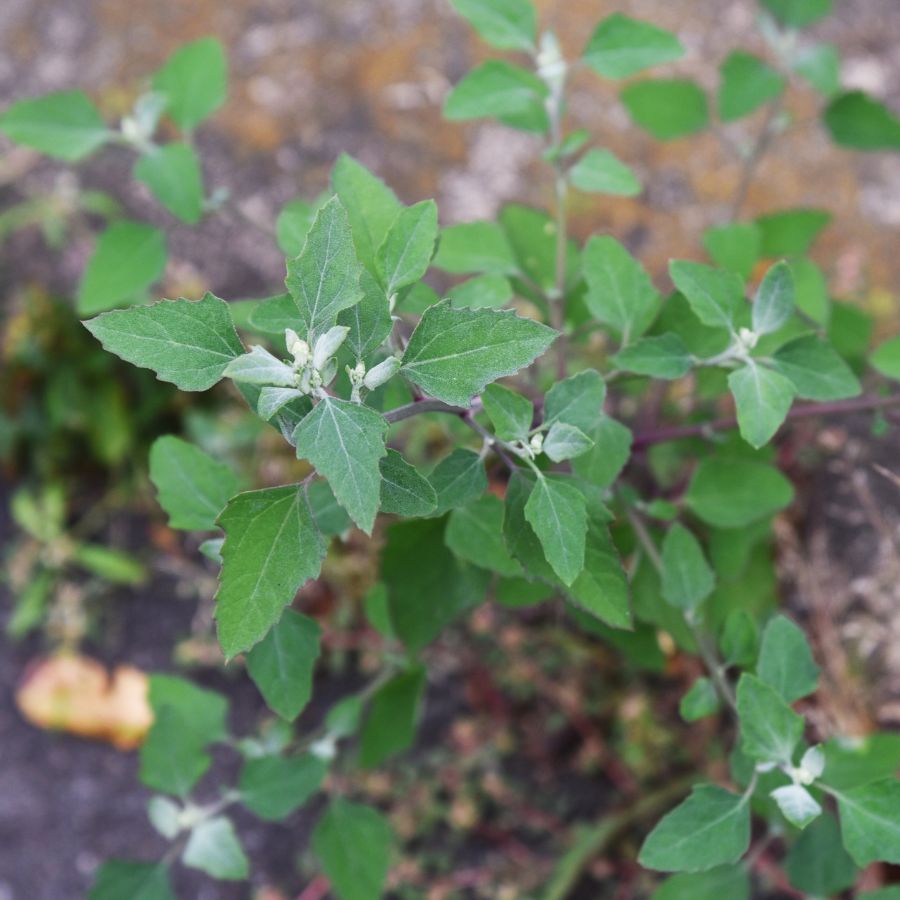
Knowing exactly what you’re picking is the most important part of safe foraging. Some edible plants have nearly identical toxic lookalikes, and a wrong guess can make you seriously sick.
Use more than one reliable source to confirm your ID, like field guides, apps, and trusted websites. Pay close attention to small details. Things like leaf shape, stem texture, and how the flowers or fruits are arranged all matter.
Not All Edible Plants Are Safe to Eat Whole
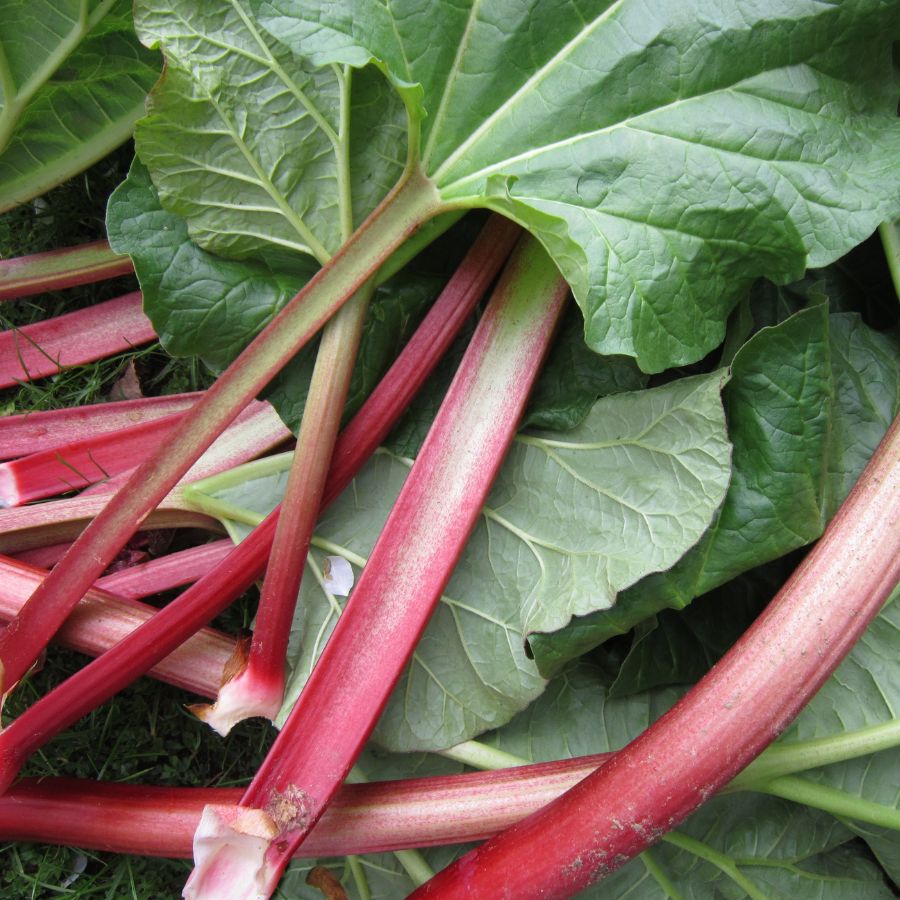
Just because a plant is edible doesn’t mean every part of it is safe. Some plants have leaves, stems, or seeds that can be toxic if eaten raw or prepared the wrong way.
For example, pokeweed is only safe when young and properly cooked, while elderberries need to be heated before eating. Rhubarb stems are fine, but the leaves are poisonous. Always look up which parts are edible and how they should be handled.
Avoid Foraging in Polluted or Contaminated Areas
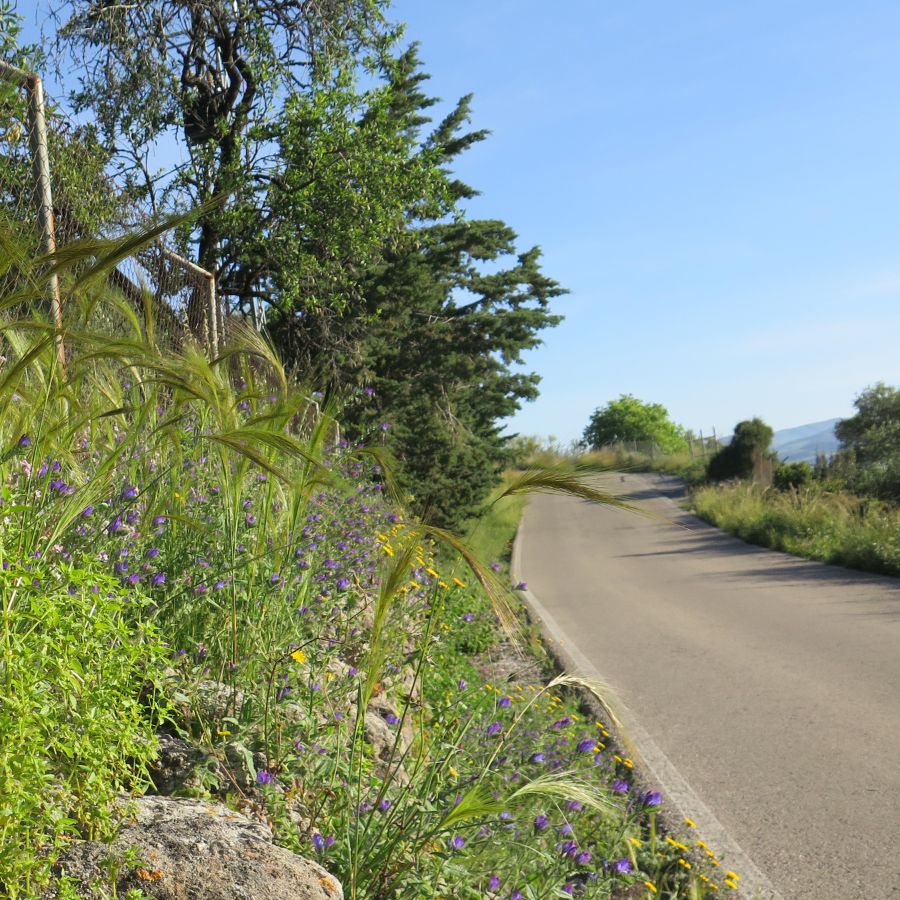
Where you forage matters just as much as what you pick. Plants growing near roads, buildings, or farmland might be coated in chemicals or growing in polluted soil.
Even safe plants can take in harmful substances from the air, water, or ground. Stick to clean, natural areas like forests, local parks that allow foraging, or your own yard when possible.
Don’t Harvest More Than What You Need
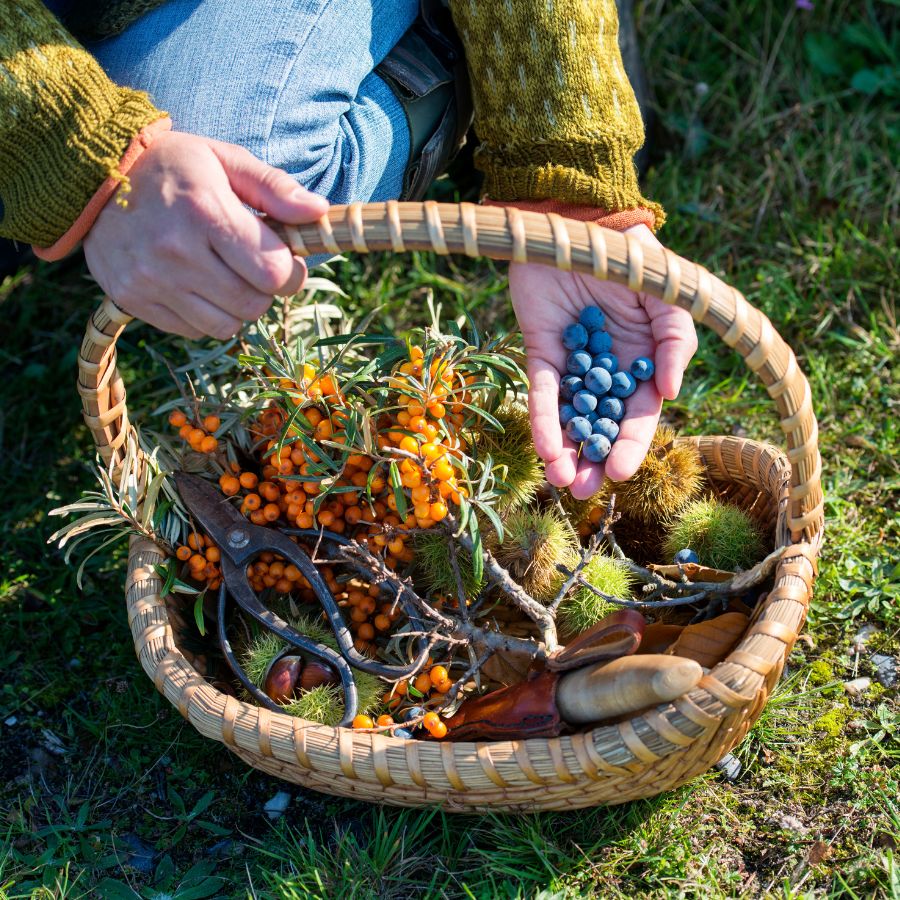
When you forage, take only what you plan to use. Overharvesting can hurt local plant populations and reduce future growth in that area.
Leaving plenty behind helps plants reproduce and supports wildlife that depends on them. It also ensures other foragers have a chance to enjoy the same resources.
Protect Yourself and Your Finds with Proper Foraging Gear

Having the right tools makes foraging easier and safer. Gloves protect your hands from irritants like stinging nettle, and a good knife or scissors lets you harvest cleanly without damaging the plant.
Use a basket or breathable bag to carry what you collect. Plastic bags hold too much moisture and can cause your greens to spoil before you get home.
This forager’s toolkit covers the essentials for any level of experience.
Watch for Allergic Reactions When Trying New Wild Foods

Even if a wild plant is safe to eat, your body might react to it in unexpected ways. It’s best to try a small amount first and wait to see how you feel.
Be extra careful with kids or anyone who has allergies. A plant that’s harmless for one person could cause a reaction in someone else.
Check Local Rules Before Foraging on Any Land
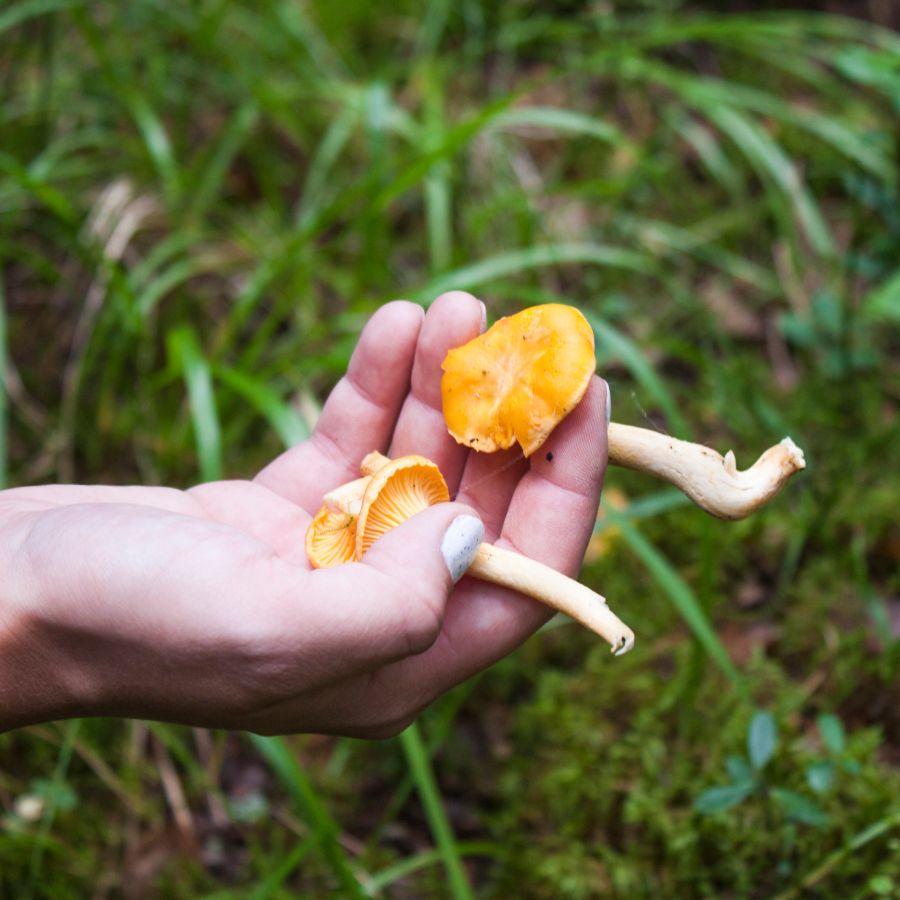
Before you start foraging, make sure you know the rules for the area you’re in. What’s allowed in one spot might be completely off-limits just a few miles away.
Some public lands permit limited foraging, while others, like national parks, usually don’t allow it at all. If you’re on private property, always get permission first.
Before you head out
Before embarking on any foraging activities, it is essential to understand and follow local laws and guidelines. Always confirm that you have permission to access any land and obtain permission from landowners if you are foraging on private property. Trespassing or foraging without permission is illegal and disrespectful.
For public lands, familiarize yourself with the foraging regulations, as some areas may restrict or prohibit the collection of mushrooms or other wild foods. These regulations and laws are frequently changing so always verify them before heading out to hunt. What we have listed below may be out of date and inaccurate as a result.
Where to Find Forageables in the State
There is a range of foraging spots where edible plants grow naturally and often in abundance:
| Plant | Locations |
| Serviceberry (Amelanchier alnifolia) | – Lewis and Clark National Forest – Bitterroot Mountains – Makoshika State Park |
| Chokecherry (Prunus virginiana) | – Gallatin National Forest – Bear Paw Mountains – Giant Springs State Park |
| Huckleberry (Vaccinium membranaceum) | – Flathead National Forest – Lolo National Forest – Cabinet Mountains Wilderness |
| Gooseberry (Ribes oxyacanthoides) | – Helena National Forest – Gravelly Range – Medicine Rocks State Park |
| Wild Strawberry (Fragaria virginiana) | – Kootenai National Forest – Mission Mountains – Spring Meadow Lake State Park |
| Wood Strawberry (Fragaria vesca) | – Rattlesnake National Recreation Area – Absaroka Range – Lake Elmo State Park |
| Thimbleberry (Rubus parviflorus) | – Swan Range – Scapegoat Wilderness – Logan State Park |
| Red Raspberry (Rubus idaeus) | – Beaverhead-Deerlodge National Forest – Sapphire Mountains – Sluice Boxes State Park |
| Dewberry (Rubus flagellaris) | – Judith Mountains – Missouri River Breaks – Finley Point State Park |
| Buffaloberry (Shepherdia argentea) | – Charles M. Russell National Wildlife Refuge – Pryor Mountains – Hell Creek State Park |
| Hawthorn (Crataegus douglasii) | – Elkhorn Mountains – Big Snowy Mountains – Lewis & Clark Caverns State Park |
| Elderberry (Sambucus nigra subsp. cerulea) | – Bitterroot National Forest – Garnet Range – Thompson Falls State Park |
| American Cranberry (Viburnum opulus var. americanum) | – Mission Valley wetlands – Glacier National Park (non-restricted areas) – Ninepipe National Wildlife Refuge |
| Mountain Ash (Sorbus scopulina) | – Whitefish Range – Highland Mountains – Placid Lake State Park |
| Nannyberry (Viburnum lentago) | – Little Belt Mountains – Blackfoot Valley – Beaver Creek Park |
| American Plum (Prunus americana) | – Missouri Headwaters State Park – Yellowstone River floodplain – Hyalite Canyon |
| Sand Cherry (Prunus pumila) | – Fort Peck Lake area – Milk River Valley – Medicine Lake National Wildlife Refuge |
| Sheep Sorrel (Rumex acetosella) | – Tobacco Root Mountains – Rocky Mountain Front – Giant Springs State Park |
| Curly Dock (Rumex crispus) | – Clark Fork River corridor – Big Hole River bottoms – Tally Lake area |
| Lamb’s Quarters (Chenopodium album) | – Bighorn Canyon National Recreation Area – Shields River Valley – Makoshika State Park |
| Pigweed (Amaranthus retroflexus) | – Yellowstone River floodplain – Bitterroot Valley agricultural margins – Missoula city trail systems |
| Fireweed (Chamerion angustifolium) | – Glacier National Park (non-restricted zones) – Anaconda-Pintler Wilderness – Lubrecht Experimental Forest |
| Dandelion (Taraxacum officinale) | – Great Falls riverfront trails – Upper Missouri River Breaks National Monument – Lee Metcalf National Wildlife Refuge |
| Chicory (Cichorium intybus) | – Gallatin Valley road edges – Helena Valley Canal trails – Frenchtown Pond State Park |
| Sow Thistle (Sonchus asper) | – Clark Fork River bank areas – Red Lodge city greenbelt – Stillwater River corridor |
| Common Mallow (Malva neglecta) | – Fort Benton riverside parks – Butte urban edges and alleys – Deer Lodge parklands |
| Milkweed (Asclepias speciosa) | – Upper Blackfoot Valley – Grasslands near Lewistown – Bitterroot foothills |
| Sunflower (Helianthus annuus) | – Missouri River bluffs – Sun River Wildlife Management Area – Pompeys Pillar National Monument |
| Jerusalem Artichoke (Helianthus tuberosus) | – Yellowstone River oxbows – Milk River floodplain – Council Grove State Park |
| Wild Onion (Allium textile) | – Pryor Mountains foothills – High plains near Jordan – Musselshell River breaks |
| Nodding Onion (Allium cernuum) | – Swan Valley meadows – Gallatin Range – Rattlesnake Wilderness |
| Yarrow (Achillea millefolium) | – Crazy Mountains – Belt Creek drainage – Mount Helena Ridge |
| Cattail (Typha latifolia) | – Pablo National Wildlife Refuge – Benton Lake National Wildlife Refuge – Hebgen Lake wetlands |
| Watercress (Nasturtium officinale) | – Spring-fed creeks near Red Rock Lakes – Shining Mountain Springs (private access may apply) – Lower Swan River system |
| Purslane (Portulaca oleracea) | – Missoula community garden edges – Flathead Lake irrigation ditches – Billings vacant lots |
| Peppergrass (Lepidium densiflorum) | – Judith Basin prairies – Dry creek beds in the Bearpaw foothills – Along U.S. Highway 2 shoulders |
| Golden Currant (Ribes aureum) | – Beaverhead River valley – Sweet Grass Hills – Hellgate Canyon |
| Meadow Salsify (Tragopogon pratensis) | – Shields Valley grasslands – Helena National Forest meadows – Big Timber foothill pastures |
| Common Burdock (Arctium minus) | – Bitterroot River greenway – Near Libby Creek – Townsend irrigation ditches |
| Stinging Nettle (Urtica dioica) | – West Fork of the Bitterroot River – Swan River Wildlife Refuge – Hyalite Canyon creeks |
| Common Plantain (Plantago major) | – Helena city greenways – Fort Missoula park trails – Glendive urban fringes |
| Narrowleaf Plantain (Plantago lanceolata) | – Bitterroot Valley roadside clearings – East Helena trail edges – Livingston riverwalk paths |
| Woods’ Rose (Rosa woodsii) | – Beaverhead-Deerlodge National Forest – Snowcrest Range – Makoshika State Park |
| Prairie Turnip (Pediomelum esculentum) | – Northern Plains near Havre – Little Missouri grasslands – Musselshell plains south of Roundup |
| Arrowleaf Balsamroot (Balsamorhiza sagittata) | – Bridger Range – Tobacco Root Mountains – National Bison Range foothills |
| Sweet Cicely (Osmorhiza occidentalis) | – Mission Mountains Wilderness – Rattlesnake National Recreation Area – West Fork Rock Creek Canyon |
| Oregon Grape (Mahonia repens) | – Elkhorn Mountains – Scapegoat Wilderness – Thompson Chain of Lakes State Park |
| Bluebell Bellflower (Campanula rotundifolia) | – Highwood Mountains – Yaak River Valley – Lost Trail Pass area |
| Cow Parsnip (Heracleum maximum) | – Blackfoot River corridor – Swan River headwaters – Stillwater State Forest |
| Wild Licorice (Glycyrrhiza lepidota) | – Missouri River breaks near Winifred – Tongue River bottoms – Medicine Lake wetlands |
| Common Evening Primrose (Oenothera biennis) | – Clark Fork River embankments – Kalispell open fields – Shelby roadside ditches |
| Ground Plum (Astragalus crassicarpus) | – Judith Basin open prairie – South of Malta grasslands – Powder River drainage |
| Bearberry (Arctostaphylos uva-ursi) | – Whitefish Range – Anaconda Hills Recreation Area – Elkhorn Flats Wildlife Management Area |
| Red Osier Dogwood (Cornus sericea) | – Swan Valley riparian zones – Beaver Creek Park – Madison River floodplain |
| Juniper (Juniperus communis) | – Pryor Mountains – Sweet Grass Hills – Big Sheep Mountains |
| Wild Bergamot (Monarda fistulosa) | – Judith Gap grasslands – West slope of Big Belt Mountains – Rosebud Battlefield State Park |
| Wild Parsnip (Pastinaca sativa) | – Flathead River levees – Parkland east of Billings – Near Hot Springs along road margins |
| Common Peppergrass (Lepidium virginicum) | – Malta prairie edges – Gravel pits west of Cut Bank – Roundup town outskirts |
| Wild Grape (Vitis riparia) | – Yellowstone River near Laurel – Bighorn River oxbows – Along Milk River near Glasgow |
Peak Foraging Seasons
Different edible plants grow at different times of year, depending on the season and weather. Timing your search makes all the difference.
Spring
Spring brings a fresh wave of wild edible plants as the ground thaws and new growth begins:
| Plant | Months | Best Weather Conditions |
| Dandelion (Taraxacum officinale) | March – May | Cool, moist days with partial sun; ideal after light rain |
| Watercress (Nasturtium officinale) | March – May | Cold, flowing spring water; cloudy or misty weather enhances freshness |
| Curly Dock (Rumex crispus) | April – May | Mild temperatures with moist soil; ideal after spring showers |
| Sow Thistle (Sonchus asper) | April – May | Mild temperatures with damp soil; prefers disturbed, sunny patches |
| Wild Onion (Allium textile) | April – May | Sunny mornings after light rain; loose, rocky soil conditions |
| Ground Plum (Astragalus crassicarpus) | April – May | Clear, sunny mornings on well-drained, grassy plains |
| Sheep Sorrel (Rumex acetosella) | April – June | Cool, damp mornings after light rain; avoid dry spells |
| Common Mallow (Malva neglecta) | April – June | Moist soil with light cloud cover; foraging best after rainfall |
| Stinging Nettle (Urtica dioica) | April – June | Damp, overcast days near water sources or moist lowlands |
| Common Plantain (Plantago major) | April – June | Cool, damp mornings in partly shaded areas after rain |
| Narrowleaf Plantain (Plantago lanceolata) | April – June | Moist soil with steady sun; best after light showers |
| Lamb’s Quarters (Chenopodium album) | May – June | Warm, sunny days with soft soil; thrives in disturbed ground |
| Wood Strawberry (Fragaria vesca) | May – June | Partly sunny days with occasional rain; cool ground cover areas |
| Wild Strawberry (Fragaria virginiana) | May – June | Warm days, light rain, and filtered sunlight |
| Nodding Onion (Allium cernuum) | May – June | Cool, clear mornings; semi-shaded meadows or forest edges |
| Meadow Salsify (Tragopogon pratensis) | May – June | Sunny, breezy meadows after rain; prefers open pastures |
| Arrowleaf Balsamroot (Balsamorhiza sagittata) | May – June | Sunny, breezy days in dry, rocky slopes or open meadows |
| Sweet Cicely (Osmorhiza occidentalis) | May – June | Moist forest floors on cool mornings after rainfall |
| Prairie Turnip (Pediomelum esculentum) | May – June | Dry prairies during sunny days with warm soil |
| Gooseberry (Ribes oxyacanthoides) | Late May – June | Cloudy or overcast days during early berry formation |
| Serviceberry (Amelanchier alnifolia) | Late May – June | Sunny mornings following overnight rain; moderate humidity |
Summer
Summer is a peak season for foraging, with fruits, flowers, and greens growing in full force:
| Plant | Months | Best Weather Conditions |
| Sand Cherry (Prunus pumila) | June – July | Dry upland slopes with early morning dew |
| Dewberry (Rubus flagellaris) | June – July | Warm, humid mornings; freshly moistened lowland thickets |
| Milkweed (Asclepias speciosa) | June – July | Warm, sunny afternoons in dry uplands or open meadows |
| Golden Currant (Ribes aureum) | June – July | Morning dew with warm days; shady draws and streambanks |
| Stinging Nettle (Urtica dioica) | June – July | Humid mornings in shady, moist environments; best before flowering |
| Cow Parsnip (Heracleum maximum) | June – July | Damp, cloudy mornings in moist forested or riparian zones |
| Oregon Grape (Mahonia repens) | June – July | Cool mountain slopes with partial sun after light rain |
| Peppergrass (Lepidium densiflorum) | June – August | Dry, breezy conditions in open grasslands or field edges |
| Chicory (Cichorium intybus) | June – August | Dry, sunny roadsides and pastures; best before flowering peaks |
| Yarrow (Achillea millefolium) | June – August | Dry, sunny slopes or rocky hillsides; early morning dew enhances aroma |
| Wild Licorice (Glycyrrhiza lepidota) | June – August | Sunny days with dry soil along riverbanks or meadows |
| Wild Parsnip (Pastinaca sativa) | June – August | Sunny, dry meadows or roadsides; best early morning after dew |
| Common Peppergrass (Lepidium virginicum) | June – August | Dry, sunny roadsides or fields with light wind |
| Huckleberry (Vaccinium membranaceum) | July – August | Cool mountain mornings; after rain is ideal |
| Chokecherry (Prunus virginiana) | July – August | Warm days, occasional rain; high plains or foothills best in early morning |
| Red Raspberry (Rubus idaeus) | July – August | Slightly overcast mornings or after rainfall |
| Thimbleberry (Rubus parviflorus) | July – August | Damp forest edges; cooler shaded areas on warm days |
| Buffaloberry (Shepherdia argentea) | July – August | Full sun with recent rainfall; riverbank foraging is best after storms |
| Elderberry (Sambucus nigra subsp. cerulea) | July – August | Humid and partly cloudy conditions; morning hours are best |
| American Plum (Prunus americana) | July – August | Hot dry days; early foraging avoids heat stress on fruit |
| Lamb’s Quarters (Chenopodium album) | July – August | Sunny with loose, well-drained soil; best early in the day |
| Pigweed (Amaranthus retroflexus) | July – August | Hot, dry days with disturbed soil; best foraged early morning |
| Fireweed (Chamerion angustifolium) | July – August | Cool, moist mornings following rain; mountain slopes or burned areas |
| Sunflower (Helianthus annuus) | July – August | Hot, sunny weather with dry soil; peak bloom in mid-summer |
| Purslane (Portulaca oleracea) | July – August | Hot, arid weather; thrives in disturbed or compacted ground |
| Bluebell Bellflower (Campanula rotundifolia) | July – August | Moist highland meadows on dewy mornings with overcast skies |
| Wild Bergamot (Monarda fistulosa) | July – August | Warm, breezy afternoons in open woodlands or prairies |
| Common Evening Primrose (Oenothera biennis) | July – August | Warm evenings in dry, sandy soils; low wind conditions |
| Red Osier Dogwood (Cornus sericea) | July – August | Moist streambanks on partly cloudy days with high humidity |
Fall
As temperatures drop, many edible plants shift underground or produce their last harvests:
| Plant | Months | Best Weather Conditions |
| Buffaloberry (Shepherdia argentea) | September | Dry conditions after cold snaps; bright, sunny foraging days |
| American Cranberry (Viburnum opulus var. americanum) | September – October | Crisp mornings with light frost; moist peatlands or bogs |
| Nannyberry (Viburnum lentago) | September – October | Cool, humid mornings; misty or foggy conditions enhance visibility |
| Hawthorn (Crataegus douglasii) | September – October | After the first frost on dry days; highland thickets preferred |
| Mountain Ash (Sorbus scopulina) | September – October | Cold, clear mornings following light frost; mountain slopes and ridges |
| Common Burdock (Arctium minus) | September – October | Cool, cloudy days after rain; best before ground freezes |
| Wild Onion (Allium textile) | September – October | Mild fall mornings; loose soil near open hillsides or slopes |
| Meadow Salsify (Tragopogon pratensis) | September – October (roots) | Dry soil following light rain; ideal during sunny fall mornings |
| Wild Grape (Vitis riparia) | September – October | Cool mornings with full sun after overnight dew or light frost |
| Bearberry (Arctostaphylos uva-ursi) | September – October | Crisp, sunny days in dry, rocky forest margins or slopes |
| Woods’ Rose (Rosa woodsii) | September – October | Dry days following frost; best when hips turn deep red |
| Jerusalem Artichoke (Helianthus tuberosus) | September – November | After first frost on dry ground; sunny afternoons for digging |
| Watercress (Nasturtium officinale) | September – November | Cool flowing streams; best harvested in chilly, shaded areas |
| Juniper (Juniperus communis) | September – November | Cold, dry weather; fruits ripen after first frost in open woodlands |
Winter
Winter foraging is limited but still possible, with hardy plants and preserved growth holding on through the cold:
| Plant | Months | Best Weather Conditions |
| Sheep Sorrel (Rumex acetosella) | November – February (leaves sparingly) | Mild winter thaws; look under snowmelt zones or sunny south slopes |
| Hawthorn (Crataegus douglasii) | December – January (dried fruit) | Cold, dry conditions; ideal after snowfall clears access trails |
| Curly Dock (Rumex crispus) | December – February (roots only) | Ground not fully frozen; overcast, slightly warm winter days |
| Jerusalem Artichoke (Helianthus tuberosus) | December – February | Ground not fully frozen; sunny or mild afternoons ideal for digging |
| Watercress (Nasturtium officinale) | December – February | Flowing spring water remains unfrozen; cold, clear days best |
| Common Burdock (Arctium minus) | December – February (roots only) | Soft, unfrozen soil; early winter thaws provide best access |
| Juniper (Juniperus communis) | December – February | Cold, clear days in open forests or dry slopes with snow cover |
| Bearberry (Arctostaphylos uva-ursi) | December – February | Sunny winter days with snowmelt exposure on south-facing hillsides |
| Red Osier Dogwood (Cornus sericea) | January – February (twigs or late fruit) | Cold, sunny conditions near unfrozen creeks or rivers |
One Final Disclaimer
The information provided in this article is for general informational and educational purposes only. Foraging for wild plants and mushrooms involves inherent risks. Some wild plants and mushrooms are toxic and can be easily mistaken for edible varieties.
Before ingesting anything, it should be identified with 100% certainty as edible by someone qualified and experienced in mushroom and plant identification, such as a professional mycologist or an expert forager. Misidentification can lead to serious illness or death.
All mushrooms and plants have the potential to cause severe adverse reactions in certain individuals, even death. If you are consuming foraged items, it is crucial to cook them thoroughly and properly and only eat a small portion to test for personal tolerance. Some people may have allergies or sensitivities to specific mushrooms and plants, even if they are considered safe for others.
Foraged items should always be fully cooked with proper instructions to ensure they are safe to eat. Many wild mushrooms and plants contain toxins and compounds that can be harmful if ingested.

